Walking through the old streets of Prague, you might discover that many houses you’ll pass are marked with strange symbols above their entryways. These are the famous Prague house signs. House signs were a popular method of identifying guilds, businesses, and palaces worldwide before the numbering system of city planning was implemented. But in most cities, these ancient markers have long since disappeared with urbanization. But in Prague, they have remained and are one of the greatest hidden treasures of the city. Searching out these famous street signs of Prague is a fun little scavenger hunt! If you’re looking for an alternative tour of the town, looking for these symbols is a great way to explore Prague.
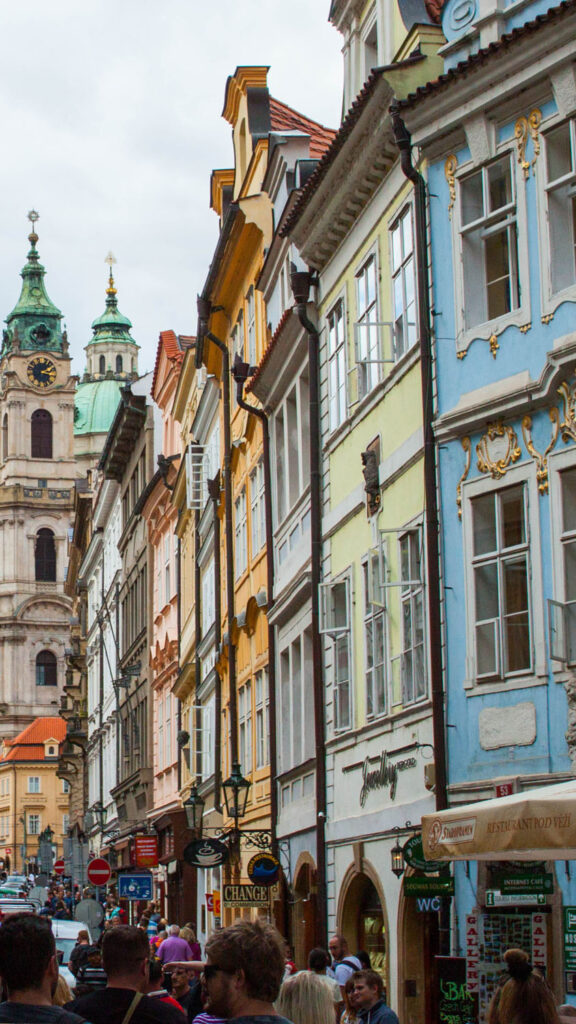
This tour will take you around some of Prague’s most famous streets and some off-the-beaten-track neighbourhoods. This is one of the most comprehensive guides to Prague’s street signs, and I have done my best to give you some hints at what the signs symbolize and where they can be found in the city! The tour has two parts: the Old Town and Malá Strana (or the Lesser Quarter). Let’s start with our guide to Prague’s Old Town House Signs.
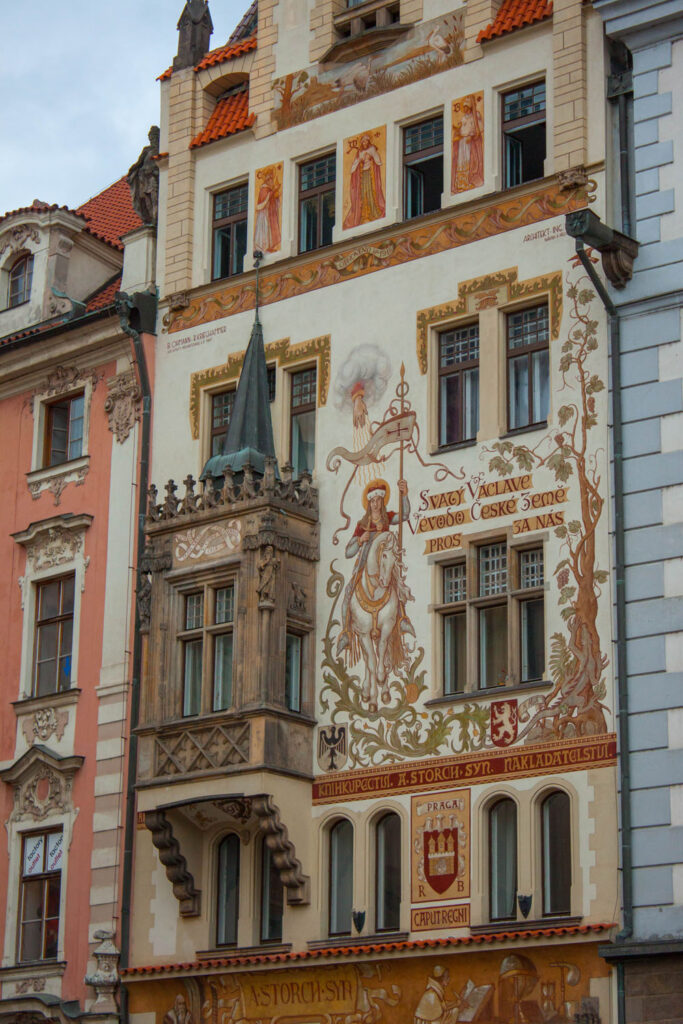
Map of Prague’s Old Town House Signs
History
Identifying houses with symbol signage is an antiquated practice that dates back to ancient Egypt. The oldest house sign, made with stone relief, was documented in Ptolemaic Egypt (Giza), dating back to the 3rd century BC. Hundreds of years ago, being able to read was a skill only the nobles or academics possessed. Since most citizens could not read, craftsmen used symbols to identify their businesses so people could find goods and services around town.
The oldest house signs in Prague, a city steeped in history, date back to the early part of the 14th century. These signs, initially used to identify occupations, later evolved to distinguish the surname of the home’s owner. This system remained in place until 1770, when Bohemia finally adopted the official numbering system. Prague’s late adoption of this system preserved many of these signs, providing a tangible link to our past.
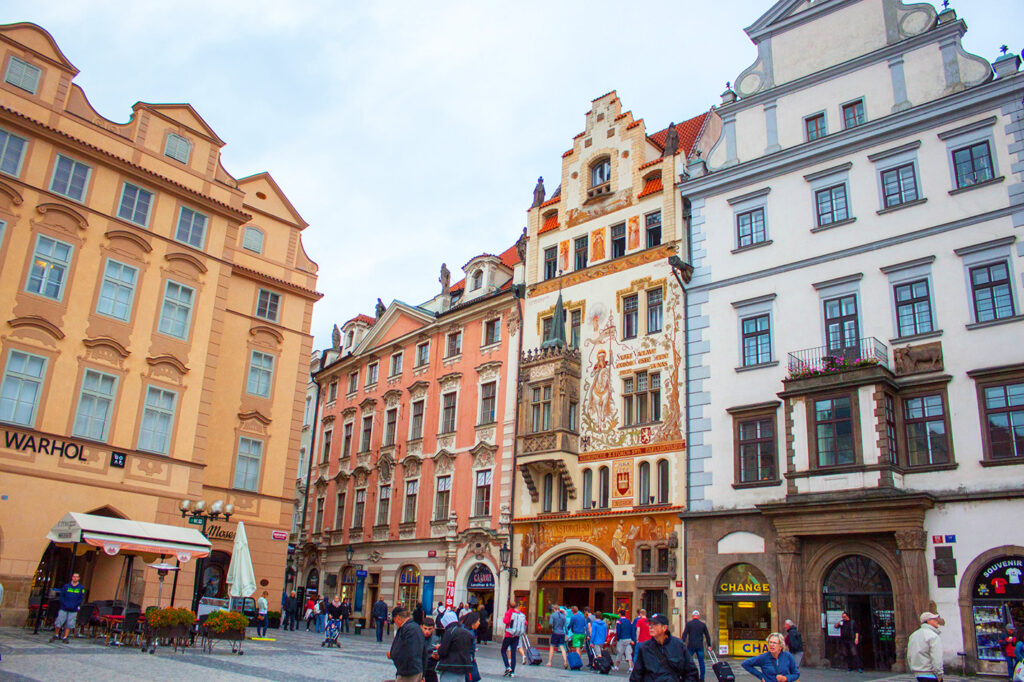
House Sign Designs
The oldest house signs were made of stone and carved with various reliefs. In the baroque age, these signs were made of stucco and plaster. Baroque designs were also painted onto plaster cartouches or tablets and placed onto the facade. Finally, in the later 18th century, the signs were made of metal or wood, more resilient against the elements. These signs were also sometimes hung off the sides of the buildings or placed on boards so that the signs could be more easily replaced should the house be sold off. Because there were only so many different symbols that could be used, sign makers would employ different coloured combinations. This would ensure people could tell the difference between establishments.
Prague’s House Sign System
Prague went through two different numbering systems when the city was enumerated. You can still see both of these numbering systems identified on the front of each house. On each house, two number plates are printed; one on a red plate and the other on a blue plate. The numbers in red are called “descriptive” numbers and date back to 1770. These red numbers seem placed haphazardly as the numbers don’t proceed sequentially from house to house. This is because when the soldiers were designating house numbers, they allocated the following number in the sequence to the newest house built. They did not base the numbers on the following geographic location. So even if your house was far from the previous house on the street, you’d receive the following number in the sequence.
The blue numbers, however, are instead based on geographic orientation. These were installed when the city was renumbered in the late 19th century. Interestingly, they kept the old red numbering system up despite its confusing nature—another quirky bit of charm which makes Prague such an exciting city.
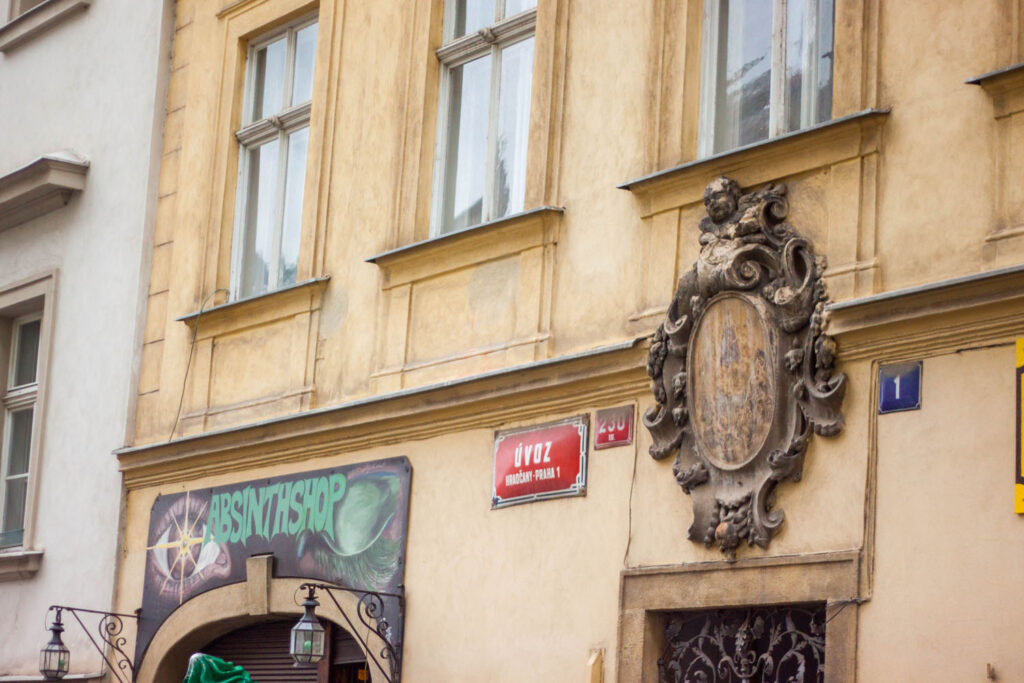
Týnská
Týnská is one of the oldest streets in the Old Town of Prague. It is located behind the Church of Týn, where it derives its name. The road was initially occupied by foreign merchants. Týnská was located close to the nearby customs office, where merchants had to pay fees and taxes for anything imported. This process would often be quite lengthy, so the merchants needed a place to stay while they waited for their taxes to be calculated. And so the street quickly became a hotbed of inns and lodging houses for the merchants.
Týnská 632/10, The Three Feathers
The Three Feathers at #10 Týnská is one of the oldest in the lane, built in the 13th century. From 1405 until the 1600s, it was used as a brewery. The Three Feathers represented on the house symbol are a reference to the crest of John of Luxembourg. John of Luxembourg was the King of Bohemia in the 14th century. Since the feathers were drawn from the royal crest, we can assume that perhaps the brewery would have been linked to the court and maybe was their official brewer.

Týnská 6, The Golden Ring
In the center of the house at #6 is a giant Golden Ring, installed in the 17th century. But the house had stood here since the 14th century when it operated as a beer hall. The legend around the ring states that one of the old town ghosts dropped it while passing through the street on one of their nightly haunts. When the beer hall owner discovered it, she hung the ring above her door. Rings, as a closed circle symbol, provide mystical protection against evil. Being a beerhall owner in the Middle Ages was undoubtedly dangerous, so a little bit of good luck couldn’t hurt. The legend was so popular that by the 17th century, the new owner dedicated the name of the house and the newly created house sign to the Golden Ring.
Celetná Street
Before heading into the old town square, we quickly detour over to Celetná Street. Celetná is named after a famous bread baked in this area during the Middle Ages. As bakeries fed the entire town, they became one of the most important places in the city, like our modern-day grocery stores. Whether you were a peasant, priest or prince, everyone came here to get their daily loaf. Celetná Street would find itself at the start of the Royal Route in the 14th century. The Royal Route was the pathway the king’s procession would travel along during the new royal coronations.
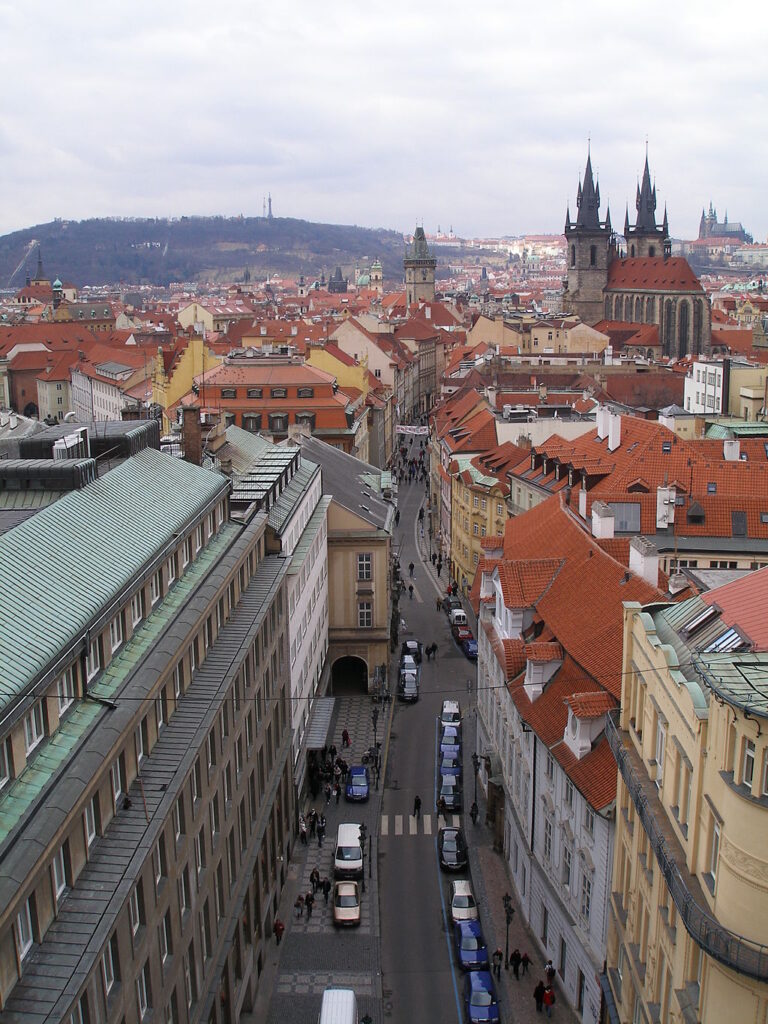
Celetná 29, The Golden Angel
Still a hotel to this day, the Golden Angel was built in 1788 as a private hotel. Inside these doors, some of the most illustrious guests in Prague would lie their heads. It hosted Kings and Queens for hundreds of years until it became a public hotel in the 20th century. Mozart and then Bakunin even stayed here! The house symbol features a golden angel holding a cornucopia and laurel wreath in their hands. The angel is known as a messenger of God. The gifts the angel bears in their arms represent God’s rewards for Christians who keep the faith even during hard times.
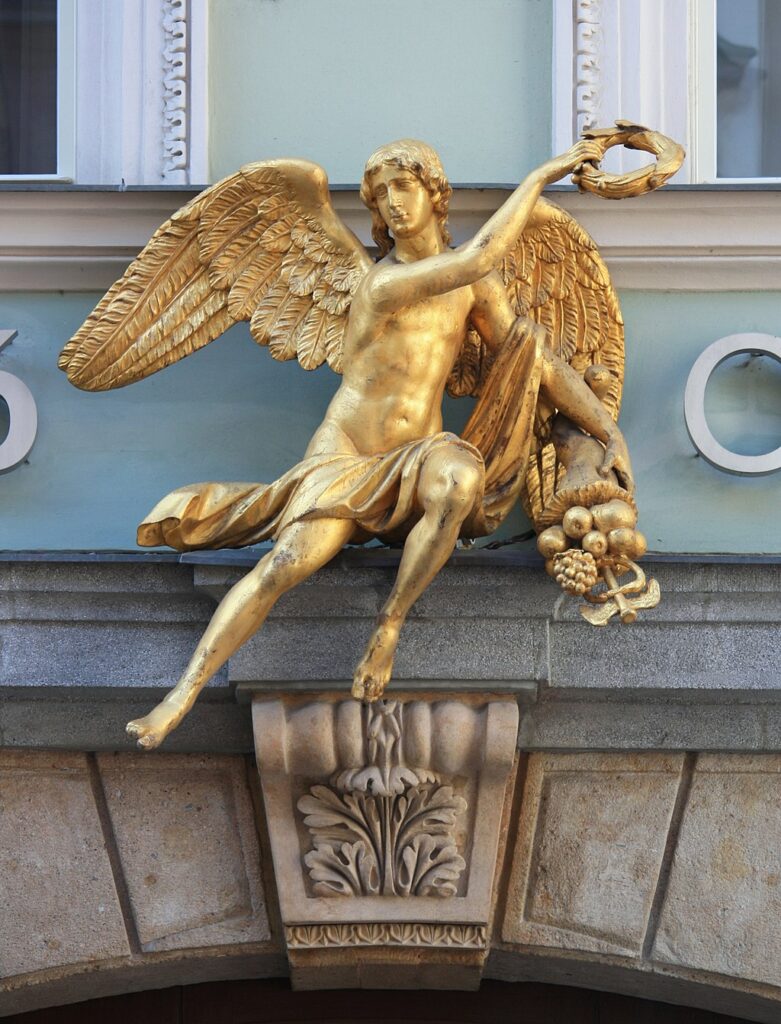
Celetná 21, At the Red Eagle
The original house, which once stood here, was built in a high Gothic fashion in the Gothic period. The current house At the Red Eagle was built in 1725 the Classical style. For many years, the house was owned by Charles University. It was here that many of the school’s professors and faculty would have stayed while teaching on campus. Charles University was started by Emperor Charles IV. Perhaps, for this reason, the symbol on the building incorporates the imperial eagles, with the sword and spear in their hands.
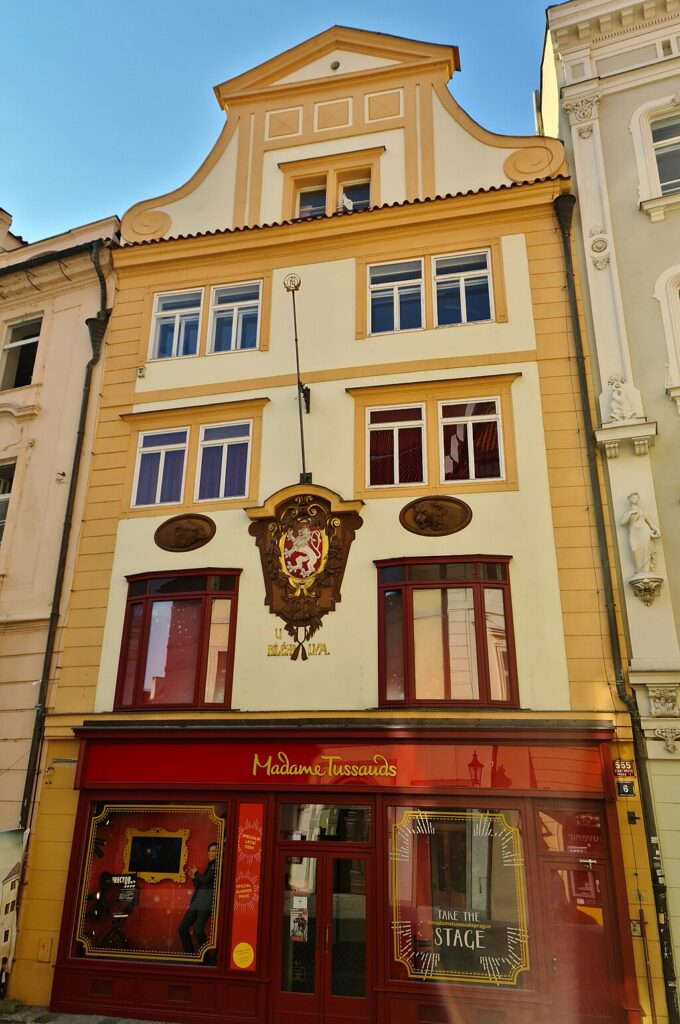
Celetná Street 10, At the White Peacock
The house At the White Peacock features a stunning rococo exterior. Each one of their windows is dripping with flowery stucco decorations. The facade’s central focus is a stucco carving featuring a lovely white peacock set against a pale blue backdrop. We cannot study these symbols in Prague without talking about alchemy. The city of Prague was one of the centers of alchemical study during the 16th century. The influence of this magic spread all over town. Many people come to Prague just to explore the alchemical trail.
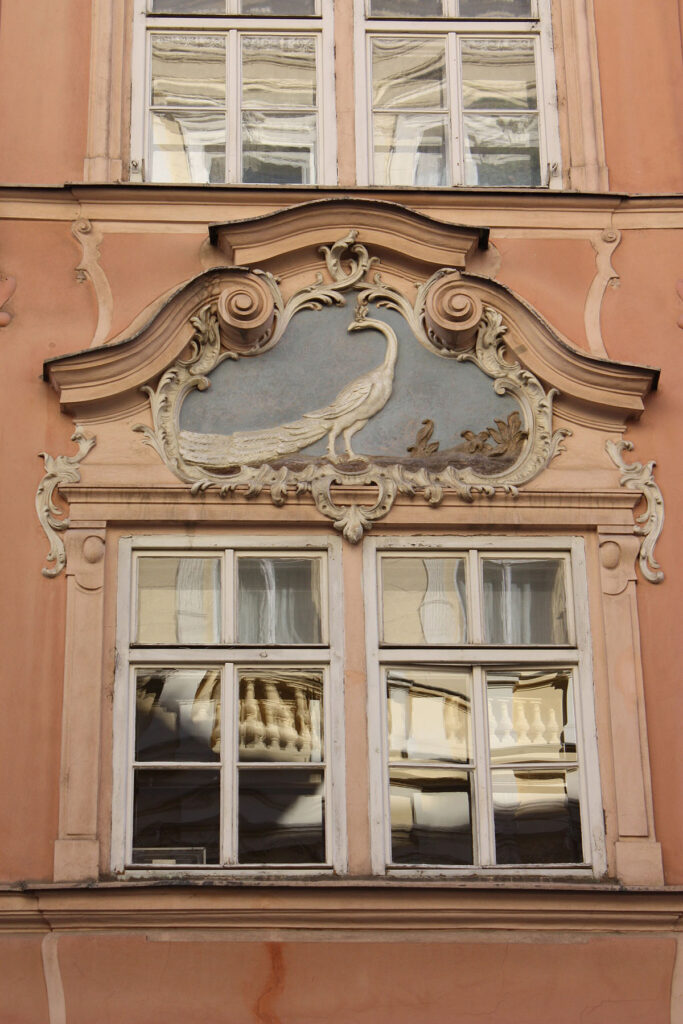
Philosopher’s Stone
The creation of the Philosopher’s Stone, a concept not confined to the realms of fiction but deeply rooted in history and alchemy, is a journey that connects us to the past. Also known as the elixir of eternal life, this substance was the ultimate goal of every alchemist. To create the Philosopher’s Stone, one had to navigate through several intriguing stages. The first stage, blackening, involved working with a dark, impure base material.
The second stage, albedo, is the purification process, where an object transforms and becomes white or pure. For alchemists, peacocks represented that method of creation. Peacock feathers look like a rainbow, and in science, white light is created when all the colours of the rainbow combine. Peacocks are also known to represent protection and watchfulness. This is due to their feathers, which appear like an eye. So perhaps the alchemists are telling us that they are still watching us.
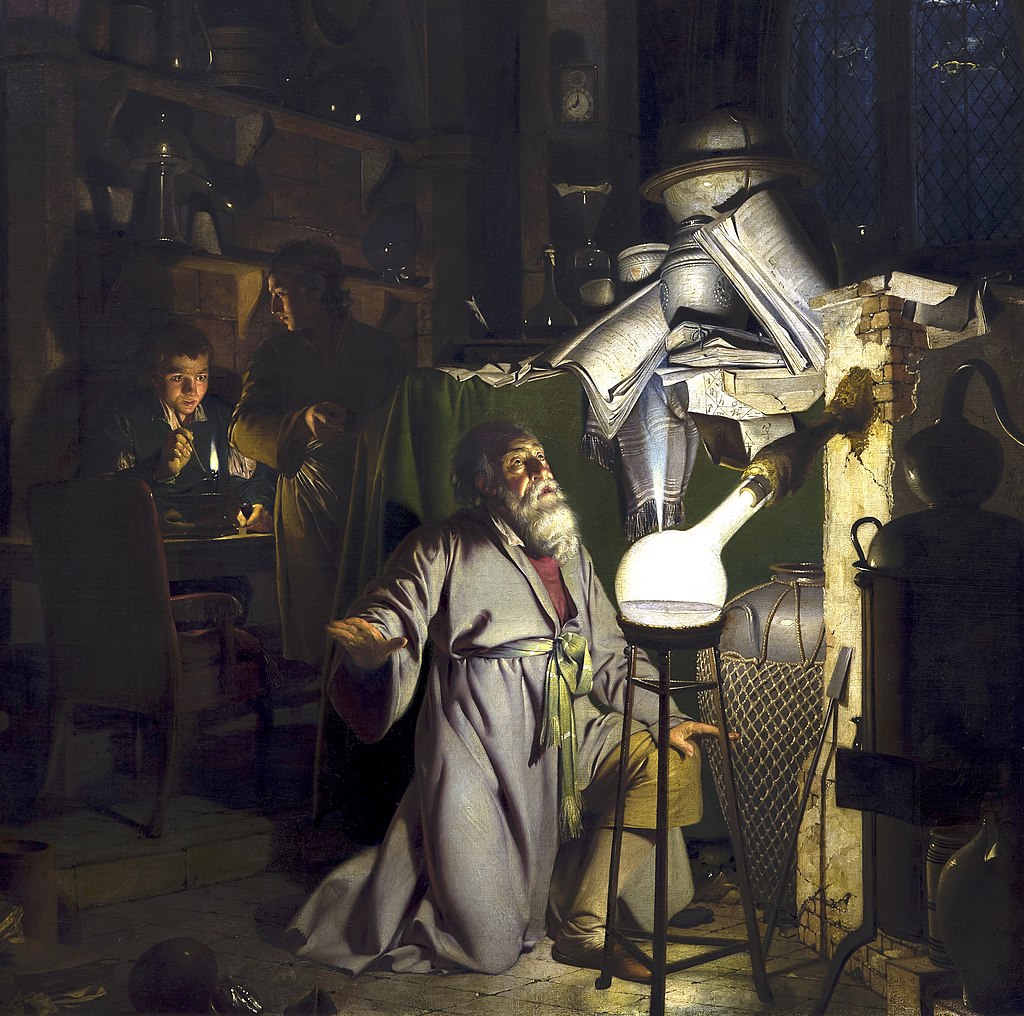
Celetná 8, At the Black Sun
At #8 Celetná, you will find a large early Gothic house with a rather plain baroque facade. But the real star of this house is the stone archway. The large wooden doors are surrounded by a sturdy stone arch. Above the archway is the relief, which gives the place its name, “The ‘Black Sun.” As a symbol, the Black Sun would be coopted by Prague’s nazis hundreds of years later. When it was carved here, I noticed the sign had a different meaning. In the early medieval period, the ‘black sun’ referred to the first stage of the alchemy trail, called the “blackening.” It is interesting to note that the alchemical trail’s first two stages are located beside each other. No houses on this street are dedicated to the different steps, the Citrinitas or Yellow Stage and the final stage, Rubedo or the Red Stage.
Týnská 3/629, At the Black Elephant
This sizeable gothic hotel, a silent witness to the passage of time, has stood on the corner of the street since the 14th century! Some of their wine cellars still bear the historic gothic vaultings from the original construction. For hundreds of years, the house has been an inn and hotel, a place where history was made and still welcomes guests to Prague today. Legend has it that the Czech King and Roman Emperor Charles IV was born just a few houses down, a fact that would have undoubtedly drawn a crowd of royal guests to the inn.
The hotel saw famous guests like Tycho Brahe, Mr. Vaclav Havel and Mrs. Albright. Much of the house’s original structure, including the historic house sign, has been preserved. A small stone sign with the rudimentary image of an elephant carved upon it marks the property. The elephant is nestled inside a shield topped with a small castle tower. The symbol of an elephant carrying a building is often used as a symbol of wealth.
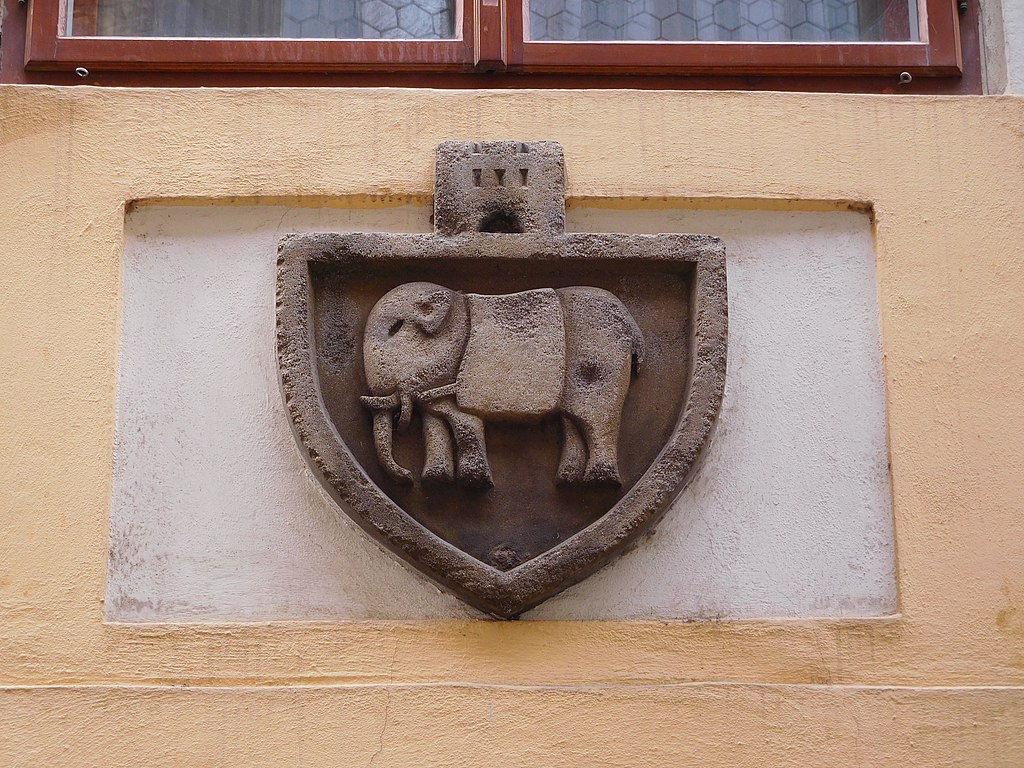
Staroměstské náměstí
Staroměstské náměstí, or Old Town Square, was first established in the 13th century. It was used as the Old Marketplace for the citizens of Prague. As time passed, the square’s importance grew, eventually transforming the area around it into one of Prague’s most sought-after real estate locations. Some of Prague’s most unbelievable historical buildings surround the Old Town square. Within them are some great examples of House Symbols.
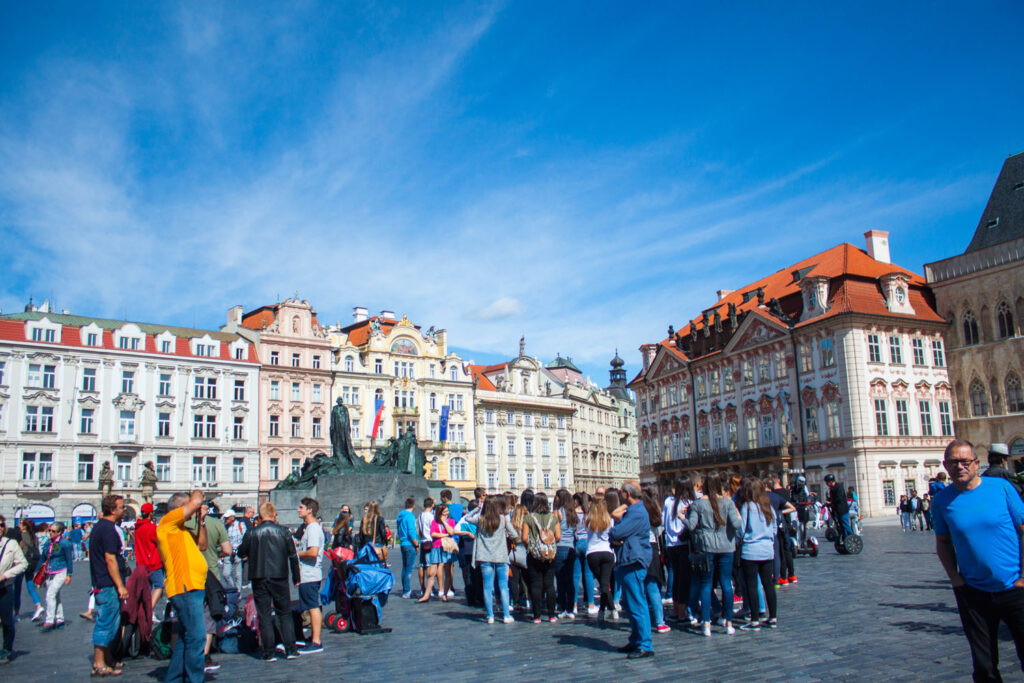
Staroměstské náměstí 605/13, At the Stone Bell
The house At the Stone Bell has one of Prague’s few remaining medieval facades. While many houses might be just as old, many facades have seen multiple renovations over the years. The house was once the palace of King John of Luxemburg and his wife, Eliška Premyslide. When John took power over Prague, he found the old royal palace to be uninhabitable, so he went about creating his new royal palace here in Staroměstské náměstí. While many royal palaces contained a private chapel, this house surprisingly contained two chapels!
The house sign of the stone bell was installed in 1413. You can see it if you look closely right at the corner of the building. Bells are known to represent the voice of the angels. As the palace had two chapels, one can imagine that the King was a very spiritual man and wanted his house symbol to reflect that. It is also thought that the bell is meant to represent the arrival of King John to Bohemia.
Staroměstské náměstí 10, Golden Cross House
This gorgeous pale pink building has one of the most fantastical house signs right on the house’s pinnacle. The building has beautiful, rich stucco designs with vines and floral motifs. The heraldic crest of Prague is set into the doorway, a three-towered castle with a soldier’s arm sticking out of the gates. But this is not the symbol we are searching for.
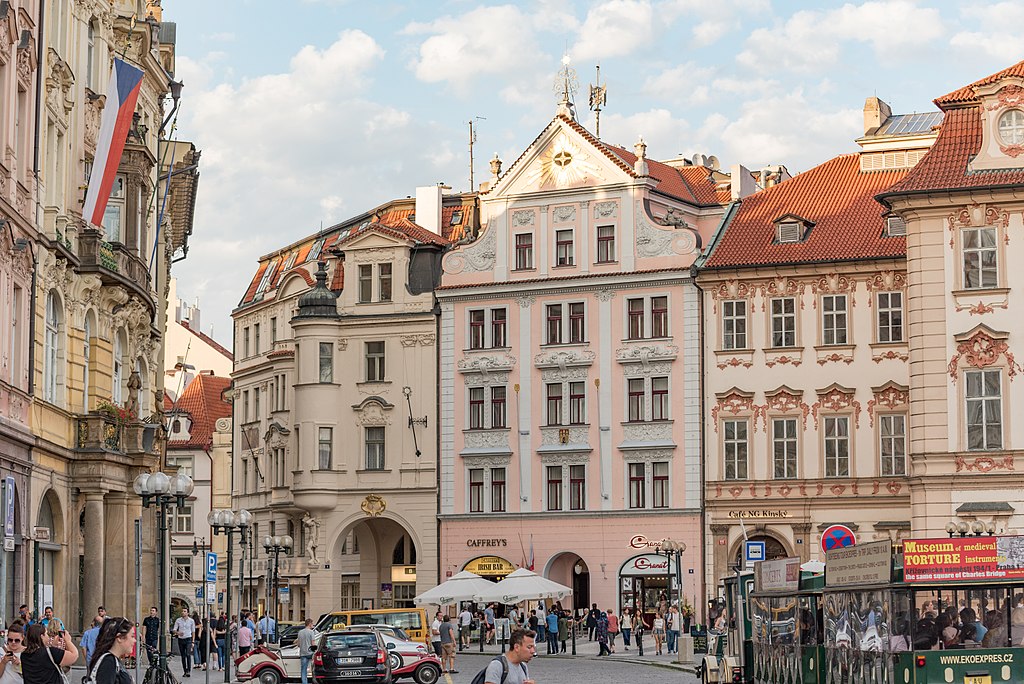
Up top, there is a huge relief set into the triangular tympanum. A shining golden sun with a cross in the middle acts like a beacon above the rest of the Old Town Square buildings. This cross highly resembles the military design of the Star of the Grand Cross of the Iron Cross, the highest military decoration of the Kingdom of Prussia and the German Empire. The Iron Cross went on to be used as military decoration during the Nazi empire, and its use faded after that.
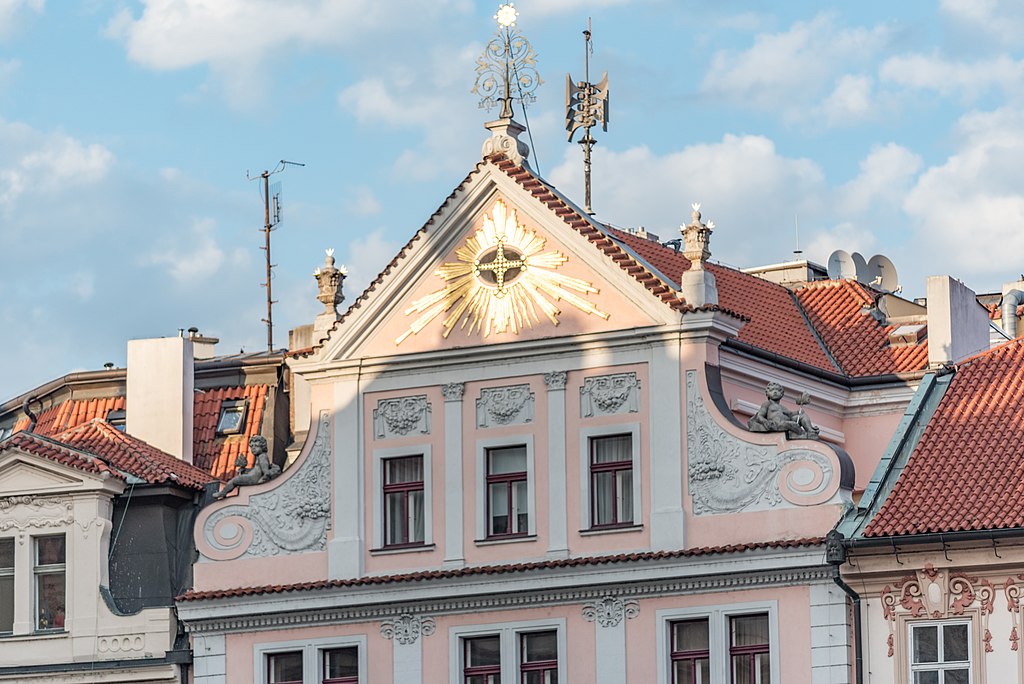
Staroměstské náměstí 551/17, House at the Stone Lamb
Along Staroměstské náměstí, stop at #551/17, where you’ll find the house At the Stone Lamb. This house is located on what was once the ‘Royal Way.’ The route starts at Republic Square and passes Prague’s most impressive sights, ending at Prague Castle. Many prospective alchemists came to the city of Prague in the hopes of meeting the Emperor. They would often stay in this house, previously a hotel, as its proximity to the royal way was thought to show reverence to the Emperor.
The house that contained the hotel had two names: House At the Stone Lamb and House At the Stone Unicorn. Both titles came from the relief carved on the building’s front between the first and second floors. The carving indeed looks like a lamb, but the single horn on its head would denote a unicorn. No one seemed to have been able to agree on one answer, so it is known interchangeably.
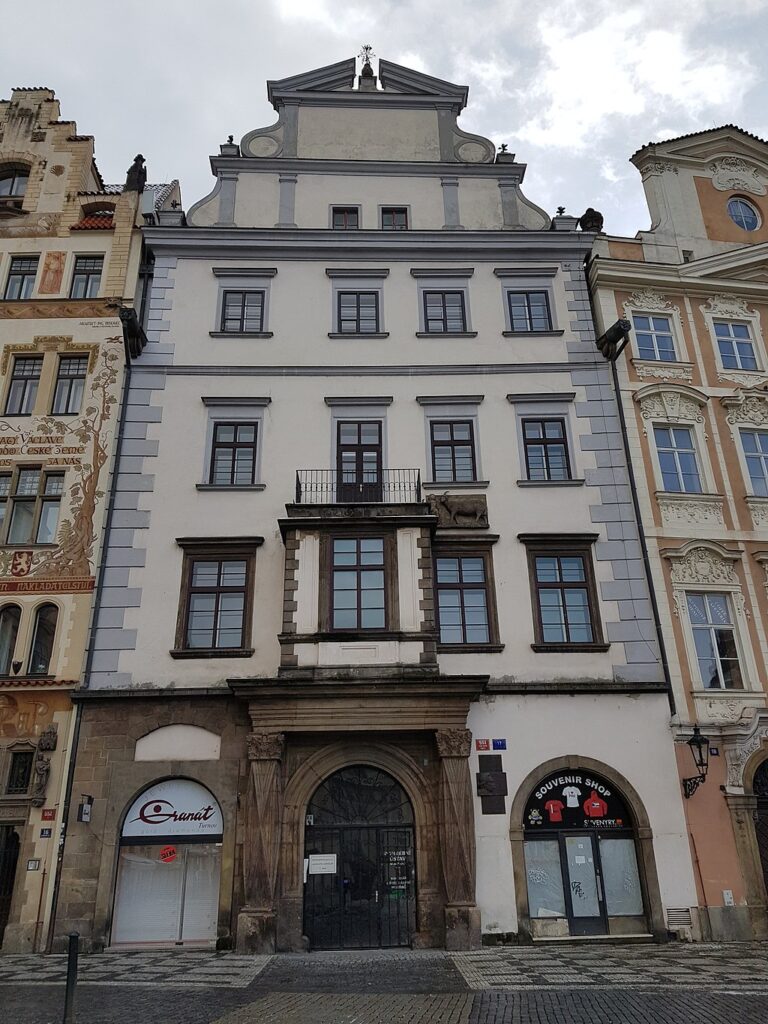
Staroměstské náměstí 550/18, At the Stone Table
This stunning Romanesque house was rebuilt in the high Baroque style in 1724 and is notable for the incredible stucco decorations around the windows. A huge fresco of St. John the Merciful is on the facade surrounded by a lavish stucco frame. The building was transformed into a literary salon by the Fant sisters. It became a popular spot with Prague’s literary and scientific elite. The name is because of the 15th-century owner, George of Poděbrady, who used it as a foreign exchange office. St. John was a good choice for the house sign as John devoted himself to charitable works and made regular payments to poorhouses.
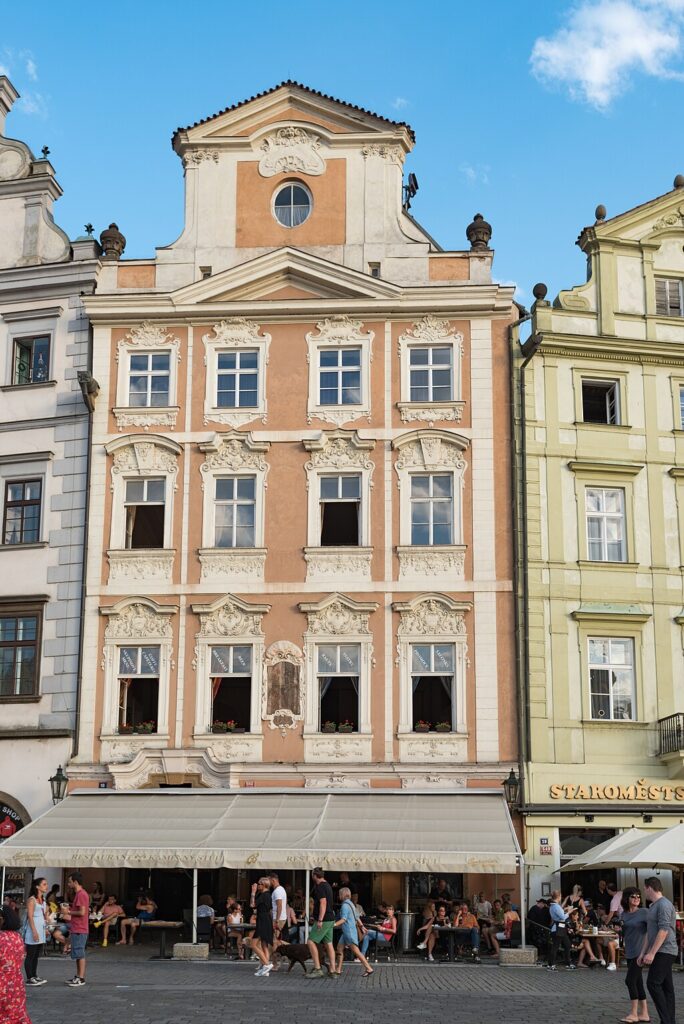
Staroměstské náměstí 20, At the Golden Unicorn
The pale blue building on the square is called the House at the Golden Unicorn. This is another Romanesque building that was converted into a palace in 1496. Beneath each window, you’ll find a beautiful lily carved into the stone, dating back to its baroque renovation in 1712. In 1781, the building was purchased by W. Ch. Gerle, who opened it up as Prague’s first public reading room. In 1791, Czech composer Bedřich Smetana purchased the building, which turned it into a music school. The house also served as Ludwig van Beethoven’s residence in 1796 when he came to Prague.
Although the house is officially called the “Golden Unicorn,” it has also been called the House at the White Horse and the House at the Red Door. Each one of these names comes from previous house signs, which would have marked the location. Today, the house symbol is a beautiful golden relief of the Madonna, which sits between the windows on the second floor. Unicorns are often associated with virginity, and as the Madonna was a virgin herself, the nickname of the house is no doubt taken from that correlation.
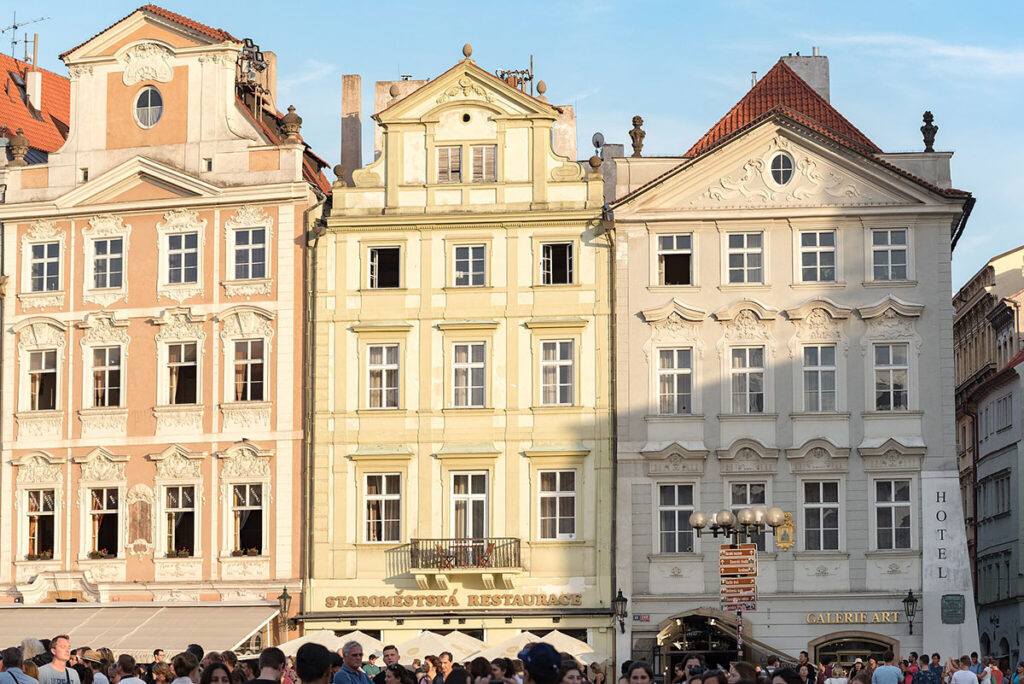
Staroměstské náměstí 24/480, At the Red Fox or Golden Wolf
A few doors down, we find the house At the Golden Fox. The house is also sometimes called the House of the Golden Wolf. The Romanesque structure was rebuilt in the Gothic style, but the current appearance is from the Baroque era. The original sign here was replaced during the Baroque renovations in place of a golden relief of the Virgin Mary. One can only imagine what the previous sign would have looked like, but we know that red foxes symbolize unpredictable change and awareness. Undoubtedly, the owner would have installed the sign during a period of upheaval in Prague’s history, hoping his business would improve for it.
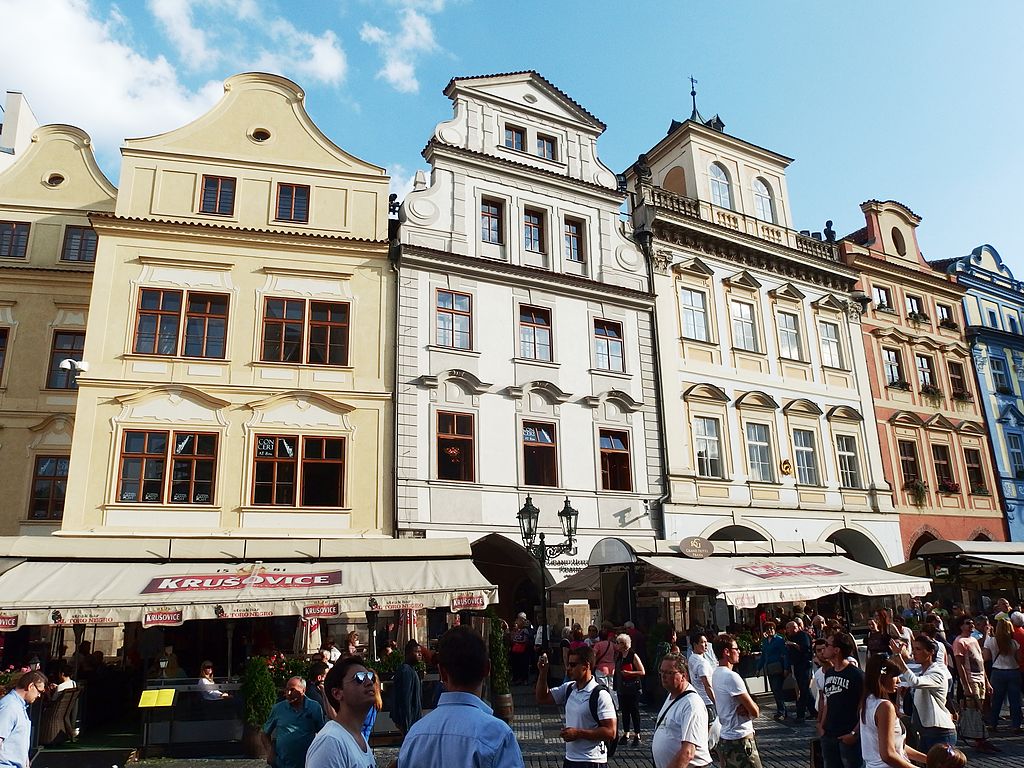
Staroměstské nám 2/3, At the Minute (At the White Lion)
This building is one of the oldest on the square, built in the late gothic style. The most attention-grabbing part of the facade is the rich Mannerist sgrafitto applied like bands around the exterior. The paintings represent Ancient Greek and biblical themes as well as Renaissance legends. A veritable snapshot of the morals of the time. The white stone sculpture of a lion is located on the corner of the building, which gives the house its name. The building was originally the old town hall, fitting as the symbol of the lion, representing justice and military power.

U Radnice 8, The Green Frog
Above the Hotel U Tri Bubnu entrance is a little symbol of a green frog. This marks the house At the Green Frog. This building is part of an extensive series of medieval structures connected to form this large complex opposite the Old Town Square. In the 15th century, a tailor ran his shop out of this house. He was well known for creating fantastical outfits for Bohemian circus performers.
One day, while working on a costume, his maid came in to clean up his studio. She thought she saw a giant green frog and heard the scream of the tailor erupting from the frog’s belly. She ran for help, but they burst out laughing when the town’s guard showed up. It wasn’t a giant frog but the tailor in a green suit. The tailor tried his own acrobatics performance and got his legs stuck behind his head, making him look like a frog while in this giant green costume. The hilarious story spread throughout the town. Instead of being embarrassed, the tailor took on the frog as a symbol of his shop, seeing as he was already getting the free press!

Malé náměstí
Malé náměstí or the “small courtyard,” is a triangular square located a few steps away from Old Town Square. While small, the court contained several prominent buildings from the Middle Ages that everyone frequented. These included the famous hardware store, a locksmith and a pharmacy. Despite its small stature, this area of town even made it onto the Royal Route.
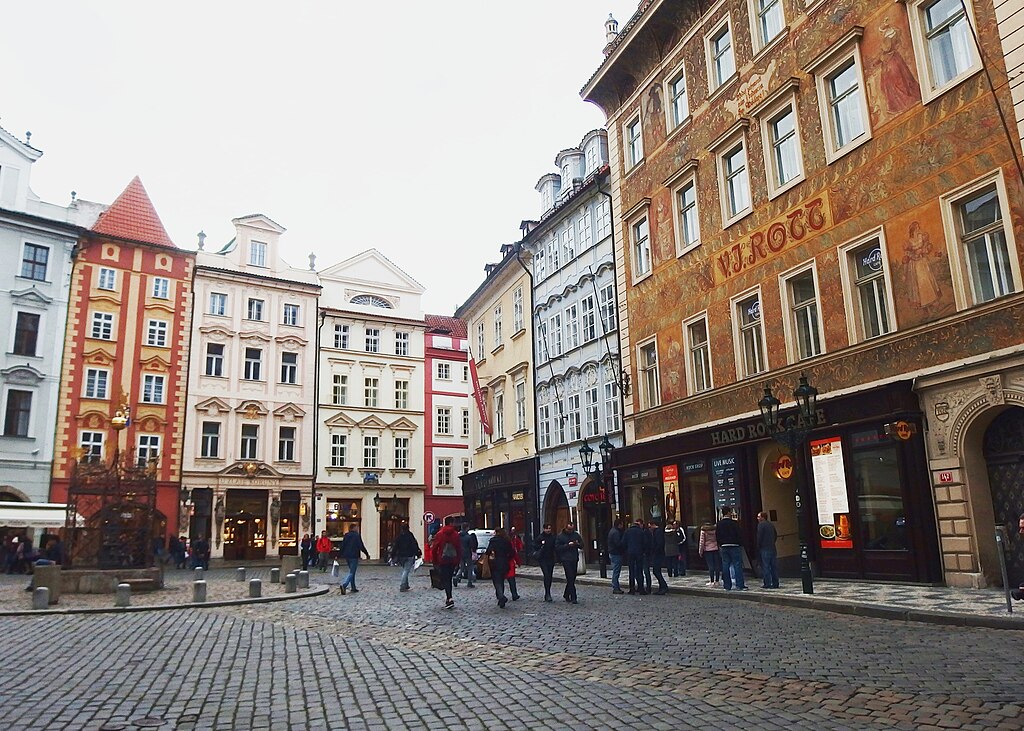
Malé náměstí 12, The Golden Lily
As a French merchant group settled this area, it’s no surprise we find evidence of their heritage. House #12, called the Golden Lily, was built in the Gothic period but renovated in 1698 in a high baroque style. The fleur-de-lis, or lily, was mentioned as being the house symbol as far back as 1405! This makes it one of the oldest house symbols in Prague. The building was originally the town pharmacy. Since the lily represents purity and fertility, it is an excellent symbol for the pharmacy. This pharmacy supplied medication to the court and the king. This is perhaps why the emblem was coated in gold to make it stand out as the “royal” pharmacy, not to be confused with those “common” pharmacies.
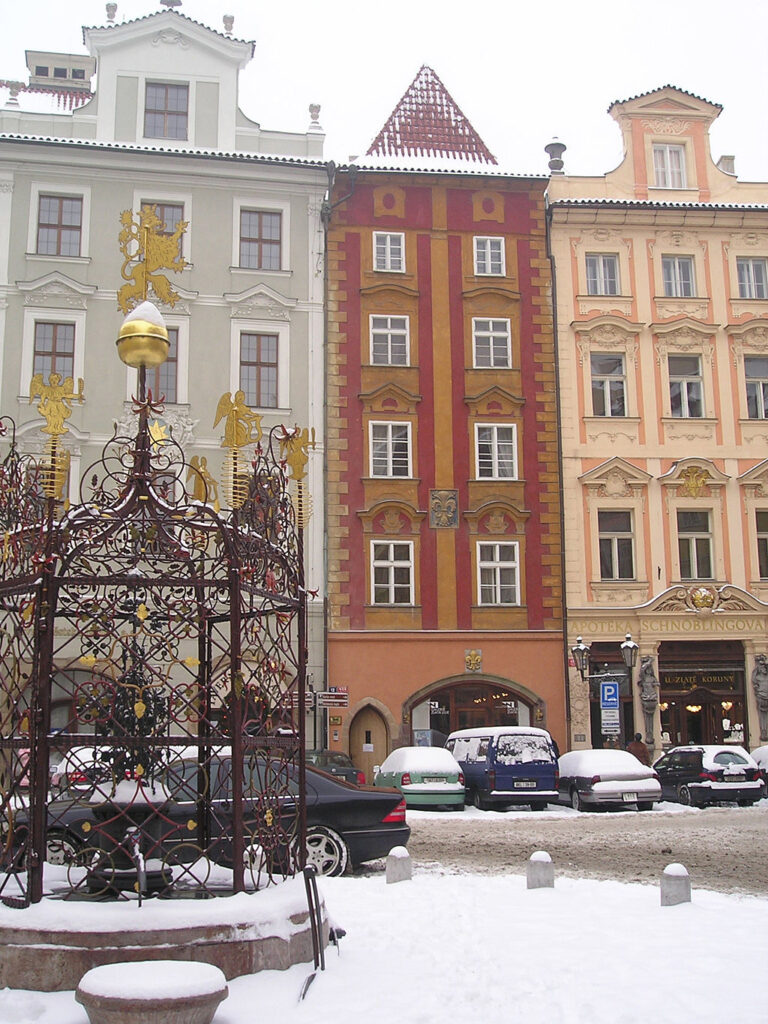
Malé náměstí 13, At the Golden Crown
In the 15th century, the pharmacy moved next door to #13 later. When it did so, it took on the name “At the Golden Crown” and had a huge regal crown emblem to match. The crown’s design resembles the great Bohemian Crown of St. Wenceslas, an iconic Czech jewellery piece. Ironically enough (or perhaps by design), the building currently serves as a fancy jewellery shop. Take a peek inside, as the interior retains some of the antique pharmacy furniture and decor.
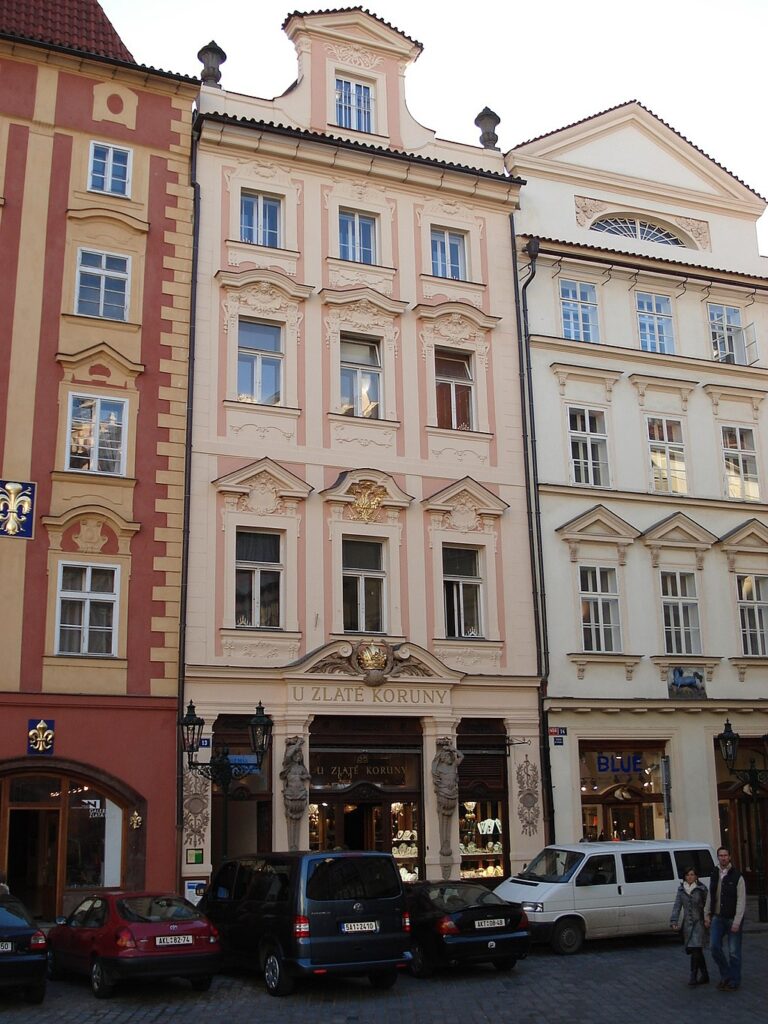
Malé náměsti 14/956, At the Little Black Horse
The house near the corner is called the Little Black Horse (although the horse is now painted a beautiful midnight blue). The house dates back to the 16th century when it served as a boarding house. When it was first built, the house was much larger, spread around the corner and contained a 40-horse stable. Having a large stable meant nobles could rest their horse near where they slept and not have to walk long distances between the inn and the stables.
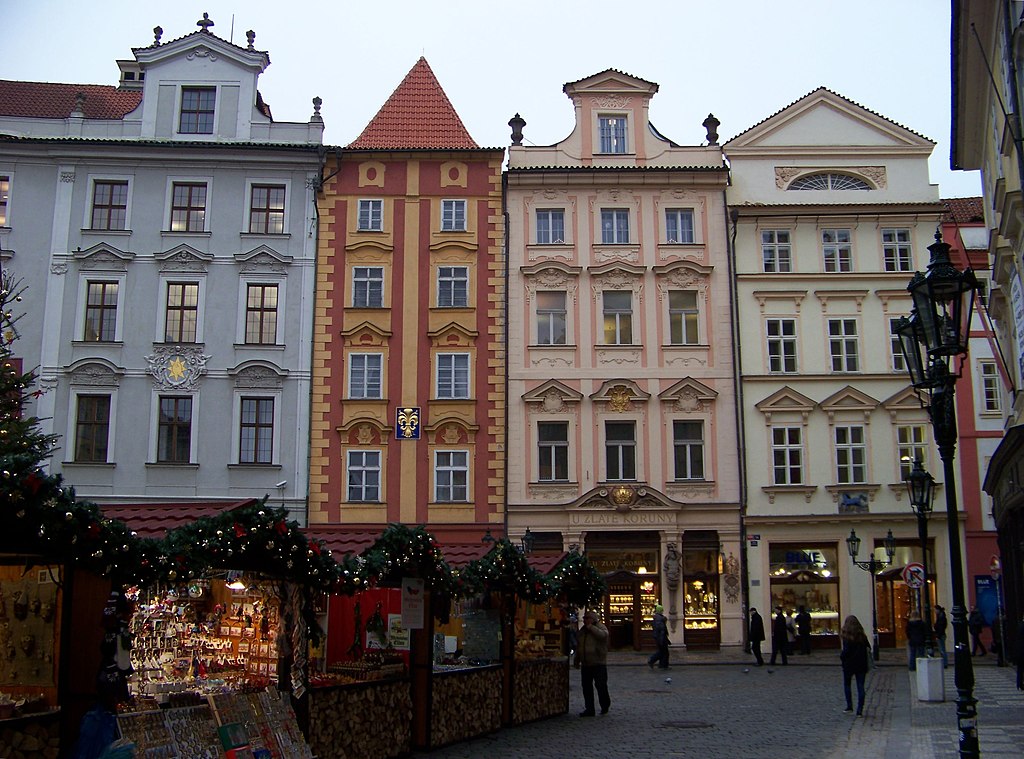
Karlova Street
Karlova Street is a pedestrians-only street that connects a small square to the Charles Bridge. It is named after Charles IV and was an essential part of the Royal route.
Karlova Street 48/455, At the Golden Crown
The house on the street corner, painted terracotta red, is one of two gothic palaces that have since been joined together. The facade bears the late 18th-century reconstruction and classicist style. On the front of the house is the large house symbol of a great golden crown carved in stucco. The house sign is originally from the 16th century. For over 200 years, the house served as a pharmacy.
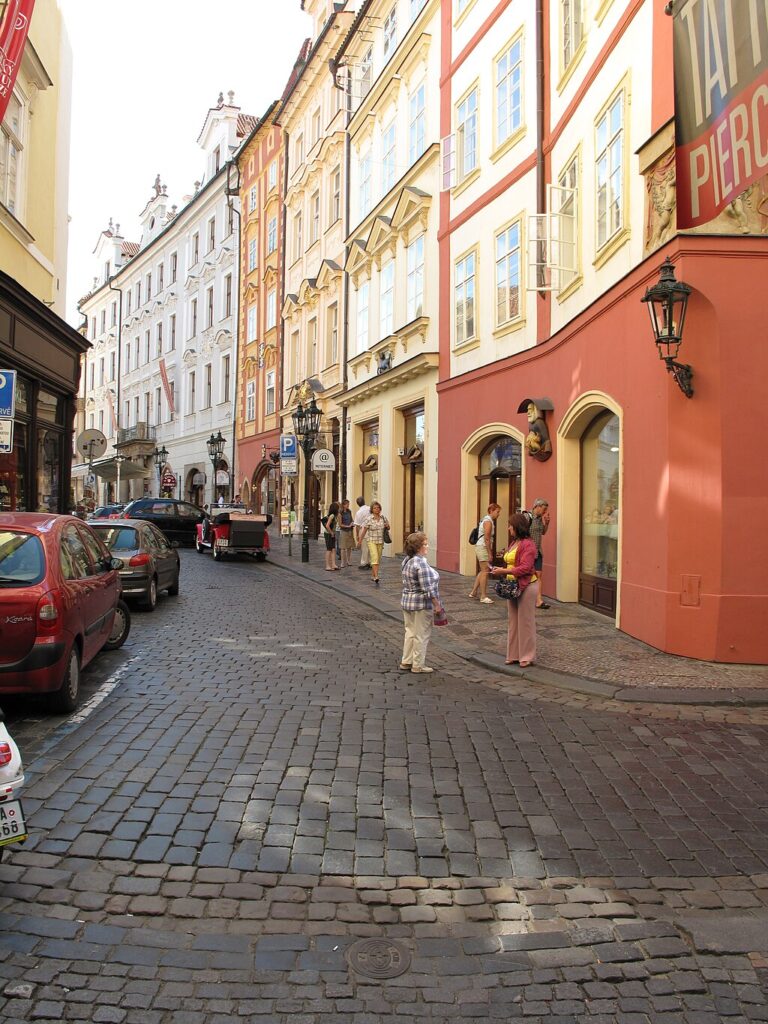
Karlova 28, At the White Shoe
The House at the White Shoe is an old gothic house with a Renaissance facade. Above each window is a series of three adorable little blooming roses. The house sign on the front depicts an old shoe, which is traditional. This was undoubtedly an old shoemaker or cobbler shop and would have been where many of Karlova’s elite would have come to get their shoes fixed. Back then, owning a pair of shoes was costly, so people would have them fixed up rather than just buy a new pair.
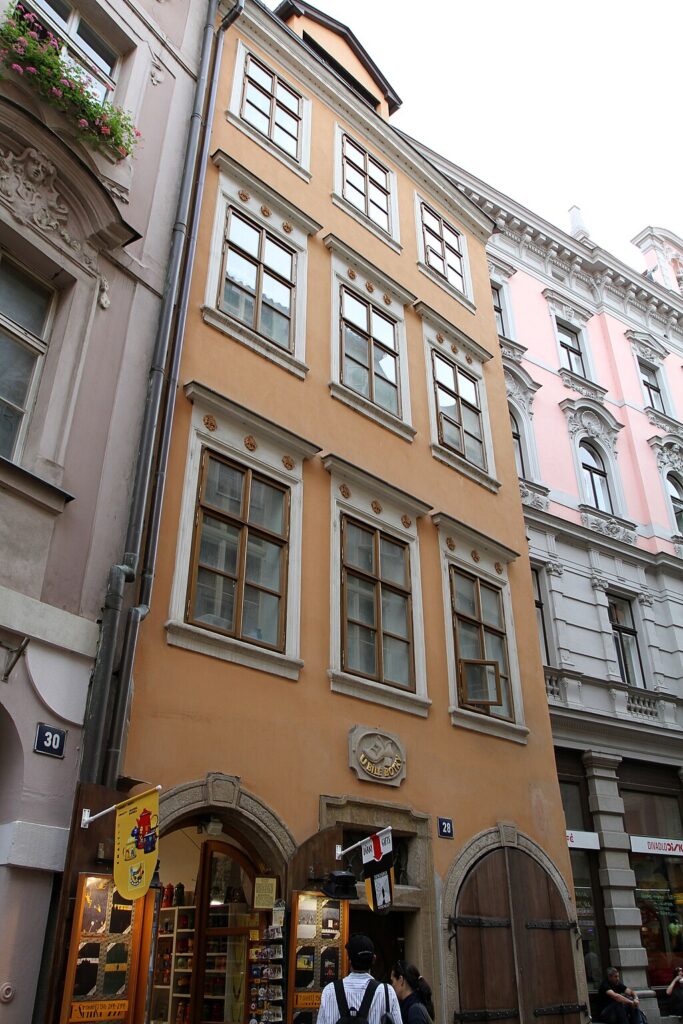
Seminarska 6, At the Black Star
As we walk along Karlova, turn up Seminarska Street for a quick detour. This ancient house at #6 dates back to 1538 and has retained its Gothic and Renaissance appearance. The name “Seminarska” means Seminar Street. This street would have once been where the priestly seminary was, close to the nearby Clementinum. Although the building looks like it is made of large stones, this is merely sgraffito (carved stucco) to give the appearance of a costly stone facade. The Black Star, with eight points, is where the house gets its name. The Black Star symbolizes female deities since the planet Venus (often associated with female gods) has eight-year cycles.
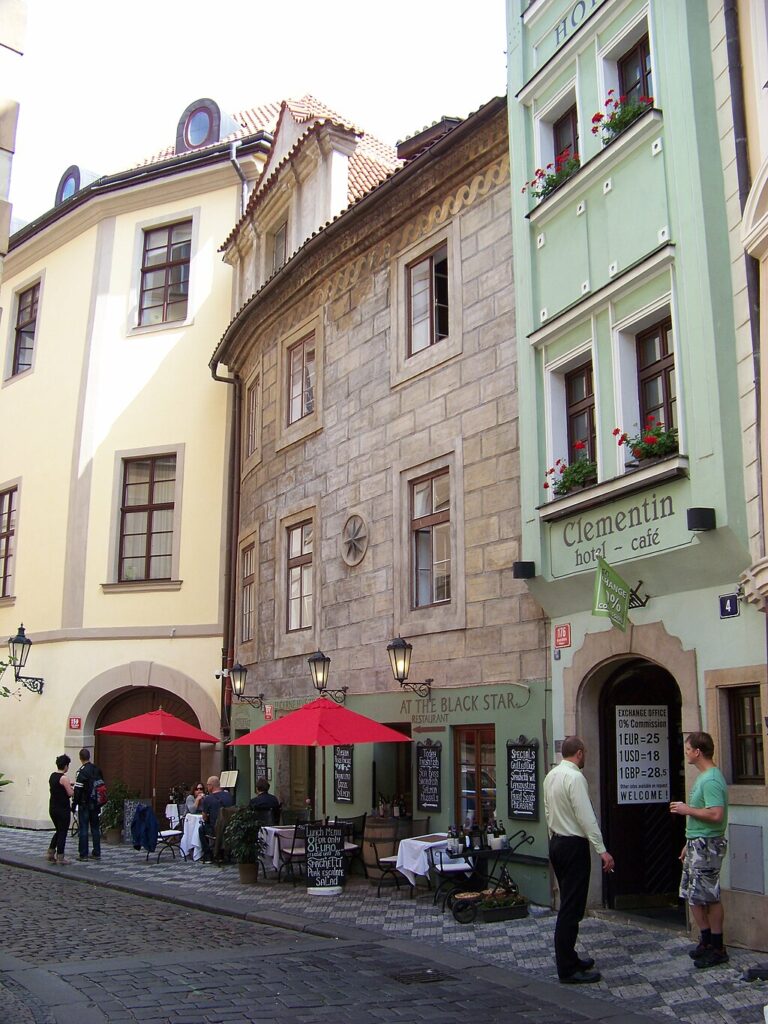
Seminarska 2, House of the Golden Well
You find the house at the Golden Well just down the road from the Black Star. This house contains the oldest foundations in the Old Town, dating back to the 12th century! Just as the home of the Black Star relates to the female spirit, so does this house. Right in the facade’s centre is a golden star with the Madonna and child’s image in the middle. Once more, this star has eight points. Perhaps this hints at the fact that this entire street was dedicated to female pursuits. Surrounding the star are stucco figures of St. Wenceslas, St. Jan of Nepomuk, St. Roch, St. Sebastian, St. Ignatius of Loyola, St. Francis Xavier and St. Rosalia.
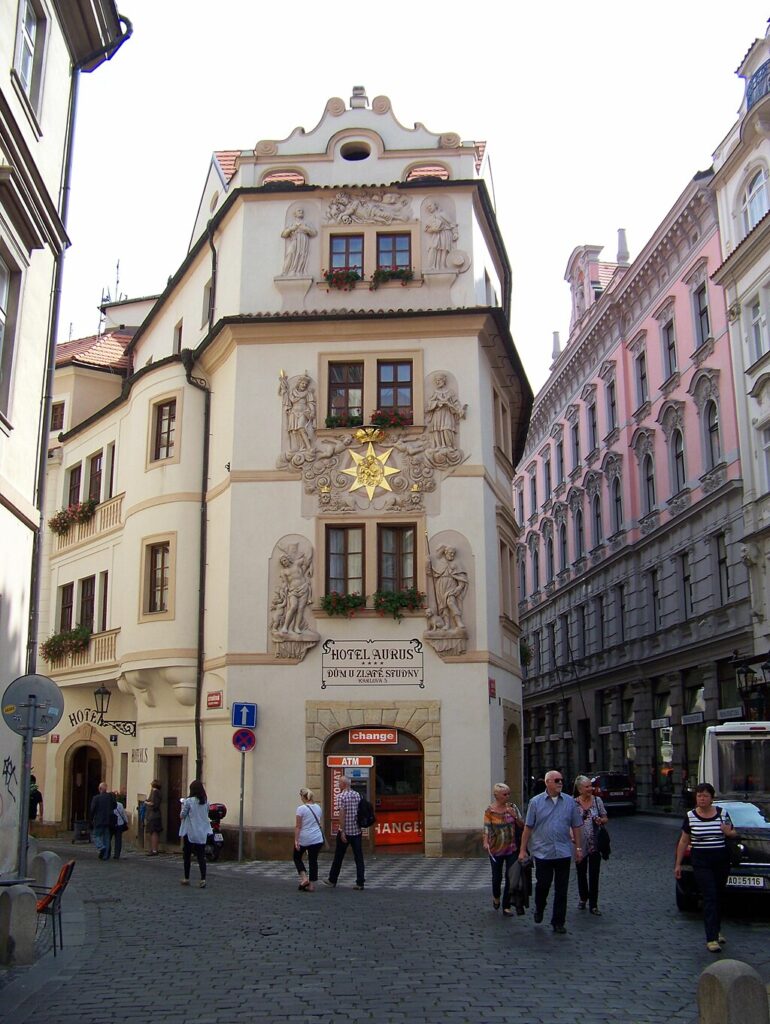
Karlova 18, House at the Golden Snake
The blood-red building on the corner of Karlova and Liliová Street bears a beautiful house number featuring a golden snake with a crown on his head and the figure of a tiny human in his mouth. The ancient symbol of a snake regurgitating man is a symbol of fertility. The house was originally the first cafe in Prague and is still open as a traditional Czech restaurant today.
Karlova Street 20/180, At the Blue Pike
According to a popular legend, the house called At the Blue Pike was one of Prague’s first pubs. The pub was so popular that it was even frequented by Wenceslas IV and his court magician Žito.
Karlova Street 14/183, The Stoned Siren
At #183, we can see the motif of a beautiful mermaid carved into the stone on the corner of the house. The symbol dates to 1439. Mermaids are the embodiment of the sacred feminine. One can imagine that the previous owners may have been involved in businesses for women or employed women. In Greek mythology, a siren is a dangerous creature that enchants sailors with her voice, causing them to be shipwrecked on the shore near their lair. Many people also think the siren story is an allegory for how prostitutes lead men to poverty.

Liliová 5, the Vorechovsky house
Liliová Street was an old pathway used as far back as the early Middle Ages, which connected Vyšehrad (the old royal palace) to the Vltava ford. As such, it was a significant street for traders. Dům U Voříkovských, or the Vorechovsky house, is on the corner of the road. The name of the place comes from the knight Jan Bohuslav Voříkovský of Kundratice, who was the mayor of Prague. The house sign on the front is a beautiful but faded late Renaissance painting of the Escape to Egypt. The story from the Gospel of Matthew details how an angel appeared to Joseph in a dream, telling him to flee to Egypt with Mary and the unborn baby Jesus. The angel warned him that King Herod would seek to kill the child.
The neighbourhood where the house was constructed in the 14th century was dominated by the Dominicans who lived at the church of St. Anny. Therefore, having a religious symbol above your door would keep you in line with the other neighbours. Below the painting is a little carving of a hand holding a piece of fruit, just on the vault’s apex leading into the house.
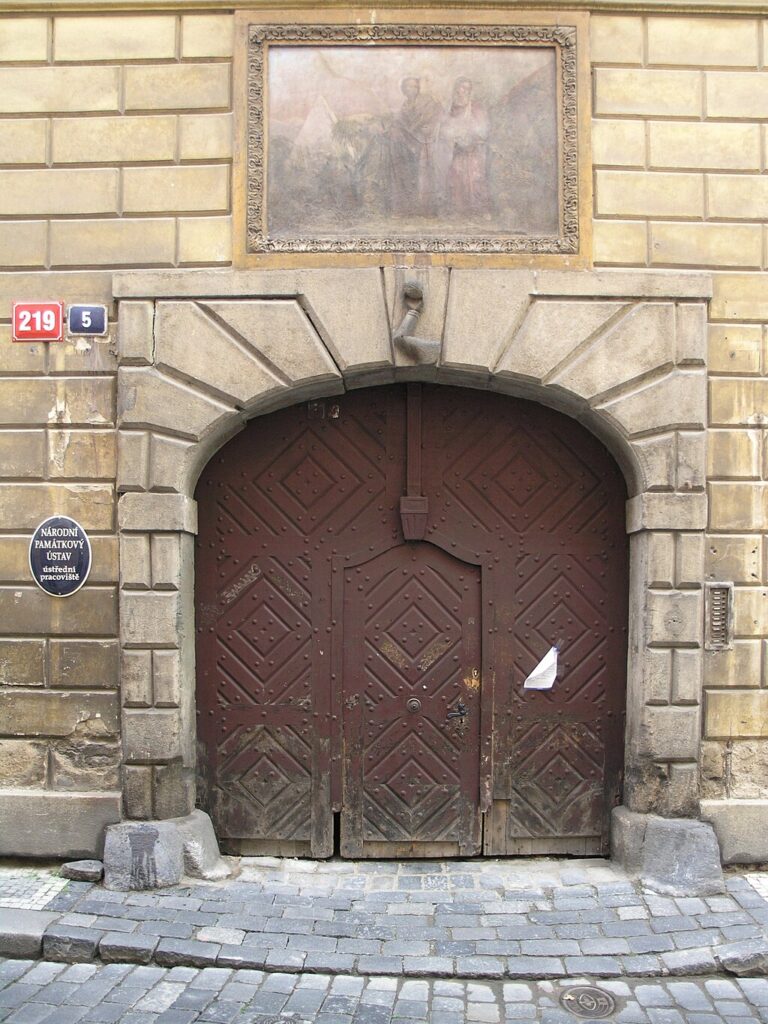
Liliová 12/246, At the Golden Hare
At #12 Liliová Street, we find a tiny little house sign. Set against an emerald background is a beautiful little golden rabbit. The house is a lovely example of early Baroque residential architecture. Rabbits and hares have been associated with fertility.
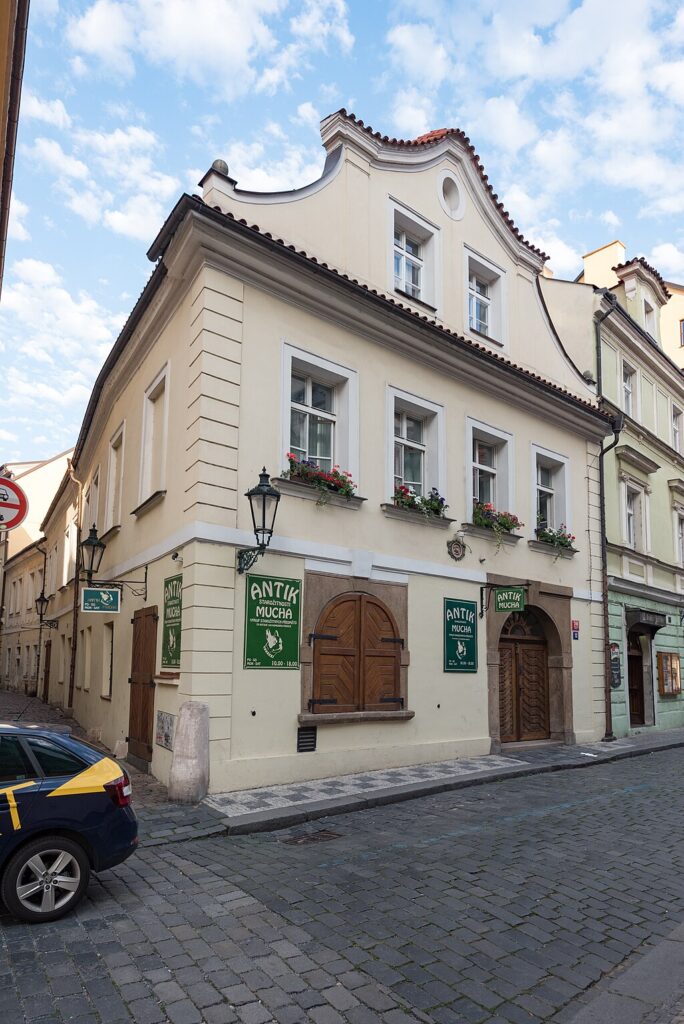
Řetézová 8/245, At the Black Boot
Head back up, Liliova, and cross over to Řetězová Street. At the house at #8, we find an old black boot set against a blood-red background. This house is named At the Black Boot. Unlike the fancy shoe carving we found along Karlova Street, this is an example of a commoner cobbler shop.
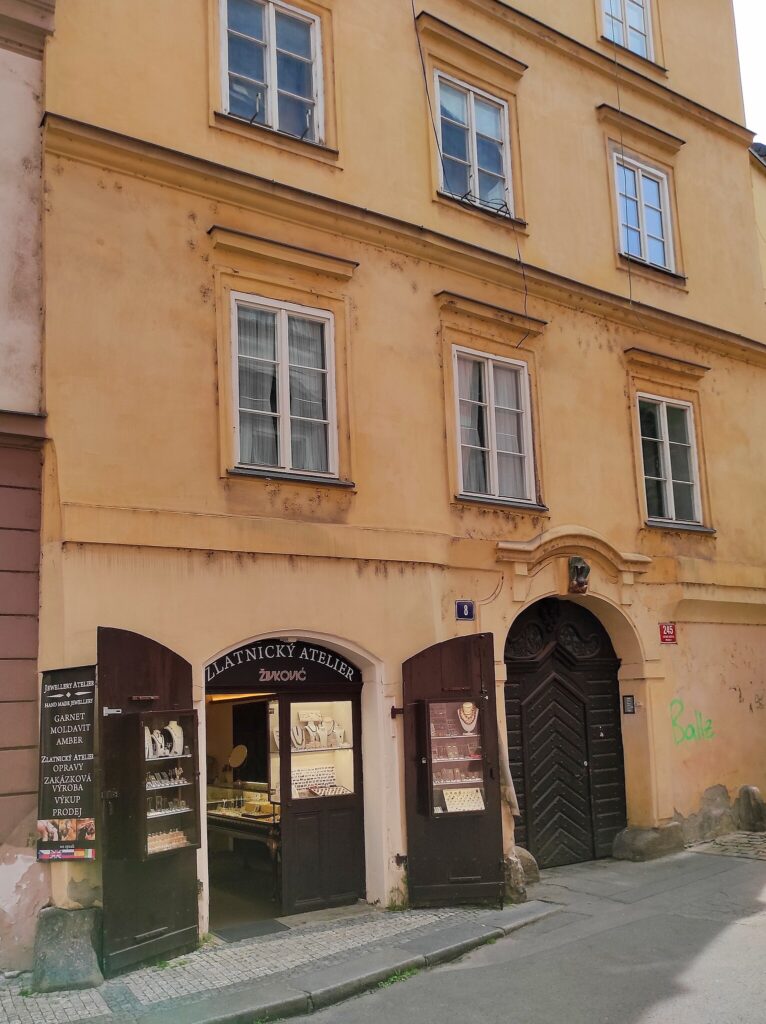
Jalovcová 1, At the Three Silver Roses
The old townhome on the corner of the street bears the insignia of three black roses with the words “U tří stříbrných růží” above them, which stands for the house “At the Three Silver Roses.” Originally, the building was two smaller Gothic houses that joined together in 1405, when it became a brewery. In 1806, Václav Kramerius, a Czech publisher, journalist, writer, and one of the most important early figures of the Czech National Revival, bought the house for himself.
Here, he could print and publish books in the Czech language, a first for the city. Despite the name being silver, the colours of the roses are black. Black roses symbolize significant change, perfectly fitting for Kramerius, who wanted to bring change to Prague by using the native Czech language. It has been renovated into a brewery to embrace its historical roots.
Husova Street
Husova Street is named after famed Czech theologian and philosopher Jan Hus. It is said that Hus attended school on the road at No. 71, so the street was named after him.
Husova 12, The Three Standard-Bearers
The house sign at #12 is not easily missed. Unlike the small carvings above doorways, the Three Standard-Bearers’ house sign is a huge marquee splashed across the facade. Three almost lifesized figures are painted onto plaques that stand atop the first floor of the building. These paintings date back to the 19th century. The original building, constructed in 1580, was previously known as the “Three Angels.”

The legend of these three characters goes back to the 1730s. Three men who were best friends each were conscripted to a different division in the army. They each agreed to meet back here at this spot after the war was over. Two of them came back and waited for the third. When they finally saw him walking down the street, as he approached, the other two discovered that the man was a ghost, killed in battle. The spirit warned the other soldiers of their impending deaths. Thinking this meant they would be killed in action, the soldiers left the army and joined the nearby monastery. But there is no running from death, and the two friends died within the year of a disease which spread inside the Franciscan monastery of Our Lady of the Snows.
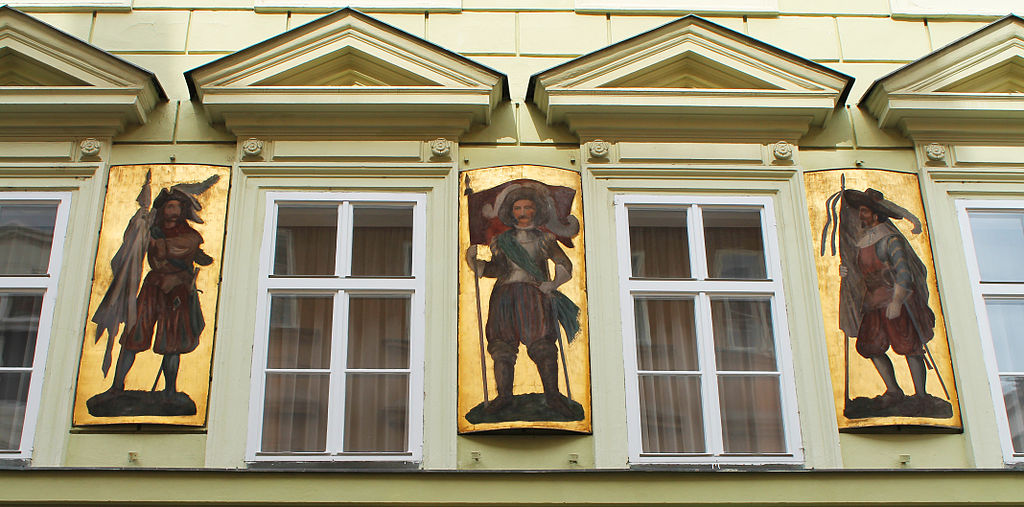
Husova 13, House of the Three Ducks
On the corner of Husova and Řetězová, we find one of the original medieval houses. Although the appearance has changed over the years, it maintains its square floor plan. Above the doorway is an embossed house sign with three ducks carved onto it. Ducks symbolize caring, nurturing, comfort, and fertility.
Husova 15, House of the Blue Grapes
At number 15 on Husova Street, we have this charming baby blue-painted house. The house dates back to 1370 and is one of the oldest places on the road. The current baroque facade dates back to the 1700s. The large house sign on the front gives the building its name, House of the Blue Grapes. The carving is made up of the image of two men carrying a giant bunch of blue grapes. This sculpture was made in the 18th century by famed Czech sculptor Josef Malinský. The two men are thought to be Joshua and Caleb, returning from Eshcol’s valley to the waiting Israelites. The story’s moral is that God keeps his promises if you follow his word.

Husova 17, House of the Golden Tiger
In the Middle Ages, tigers were thought to represent the cruelty of war. Thus, tigers were not a very popular symbol for house signs as they were almost taboo. But this taboo eventually caught on as a trendy subversion. It became avant-garde for European cafes to use these animals as their house symbols. This cafe first used a black lion as their house sign. It wasn’t until 1713 that it became known as the House of the Golden Tiger and was fitted with the matching symbol. Some of the Czech Republic’s most famous writers, politicians and artists have frequented the Golden Tiger. It became almost a creative workshop for the city and was full of creative energy!

Husova 18/157, At the Golden Horse
This 15th-century house was rebuilt in the classicist style in 1804 but still displays the beautiful frescoed house sign. The House at the Golden Horse depicts a beautiful golden horse running across a blue and green landscape. Horses are known to symbolize freedom, but this horse most likely was used to indicate a stable where people could store their horses on the way into the city.
Michalská 13/439, At the White Hare
At house number #13, we find the house At the White Hare. The gothic construction with classicist reconstruction contains a fresco of the rabbit jumping across the plains in a small painting above the doorway. White hares and rabbits were sometimes the symbols of innocence and purity.
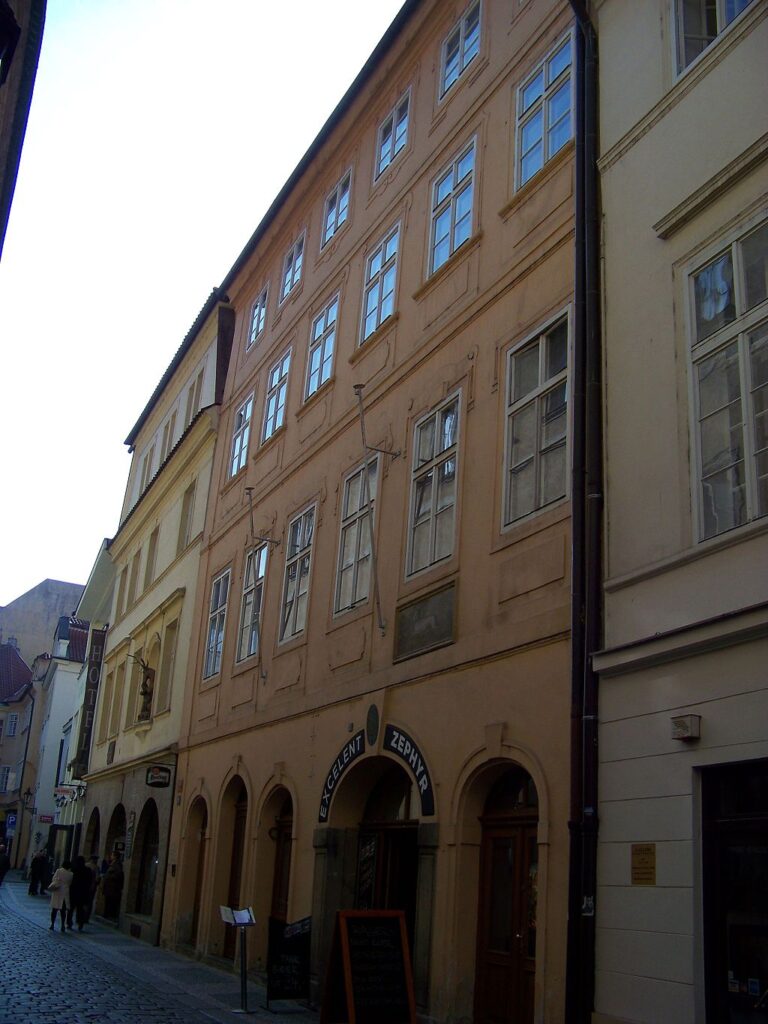
Michalská Street 19/436, Iron Gatehouse
Michalská Street was named after the Church of St. Michael the Archangel, built here in the second half of the 12th century. The Iron Gatehouse was built in 1519 and contained a beautiful fresco above the doorway depicting Samson at the Gate of Gaza. This story involves Samson sleeping with a prostitute when visiting the city of Gaza. His enemies planned to surprise him at the city’s inner gates and attack him in the morning. But Samson arose at midnight and destroyed the city’s colossal stone doors in an act to humiliate and oppose the Gaziites. Without city gates, the city was vulnerable to attack. This story from the bible portrays Samson as the flawed hero and is thought to prove that God’s plan is sometimes achieved with all kinds of people, not just the pious.
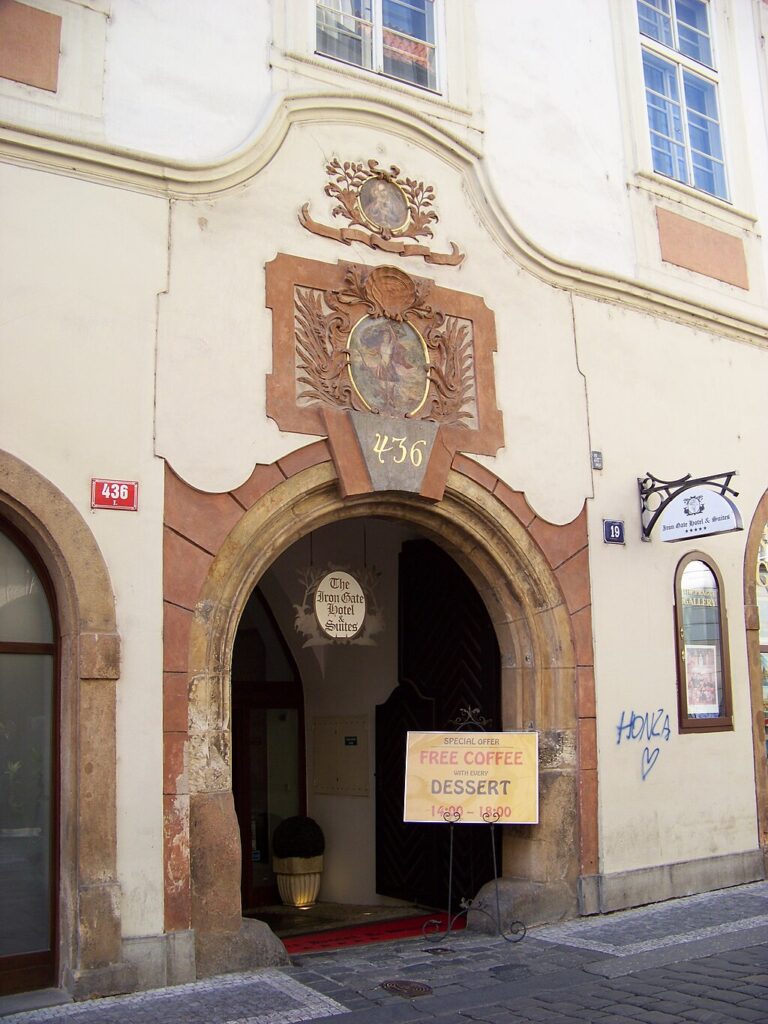
Kožná 475, The House at the Two Golden Bears
Before turning down Melantrichova, look at the house on the corner of Kožná. The building was constructed in 1567 and is known as the house at the Two Golden Bears. Court architect Bonifaz Wohlmut designed the wonderfully detailed stone portal in the 16th century. The two bears, one light smaller than the other, are said to represent the Great Bear (Ursa Major) and Little Bear (Ursa Minor) constellations.
Beside each of the bears is a knight that kneels beside them, holding a branch in their hands. The man on the left is slightly larger than the man on the left. These two figures represent old age and youth. The branch the older man is holding is beginning to dry out, while the branch in the younger man’s hand was once painted with green paint to show off its new growth. You can read this as an interpretation of the cycle of life. But there is another reading of this house sign, which symbolizes the alchemist’s creation of the elixir of life. Perhaps the young man isn’t ageing at all, but the old man is becoming young again after drinking the elixir of life!
Melantrichova 11, House of the Five Crowns
Melantrichova Street was named after the Czech Renaissance printer and publisher Jiří Melantrich, who lived in Prague from 1511 to 1580. The house at #11 is a Gothic structure with a Renaissance facade. Along the front, sandwiched between the second and third-floor windows, are a series of carved crowns, which give the house its name, House of the Five Crowns. Seeing as the crowns are repeated, it is clear that whoever lived in this house wanted their royal status to be at the forefront of every visitor’s mind when they approached.

Rytirska 16, The Blue Rose
Rytířská Street was one of the medieval streets where jousting tournaments took place as part of the celebrations during the coronation of Charles IV. This tradition would continue for hundreds of years. The street was also used as a large marketplace. The western part of the road was known as the egg market, and the eastern part was known as the goose market. The U Modré růže house, or the Blue Rose, was established here in 1364. The gothic tower, which remains in place, is one of the more unique aspects of the house. Above the original doorway is a carving of a beautiful blue rose in a cartouche. Blue roses are known to symbolize unrequited love or love lost. Perhaps the house owner had the symbol made in honour of a love lost.
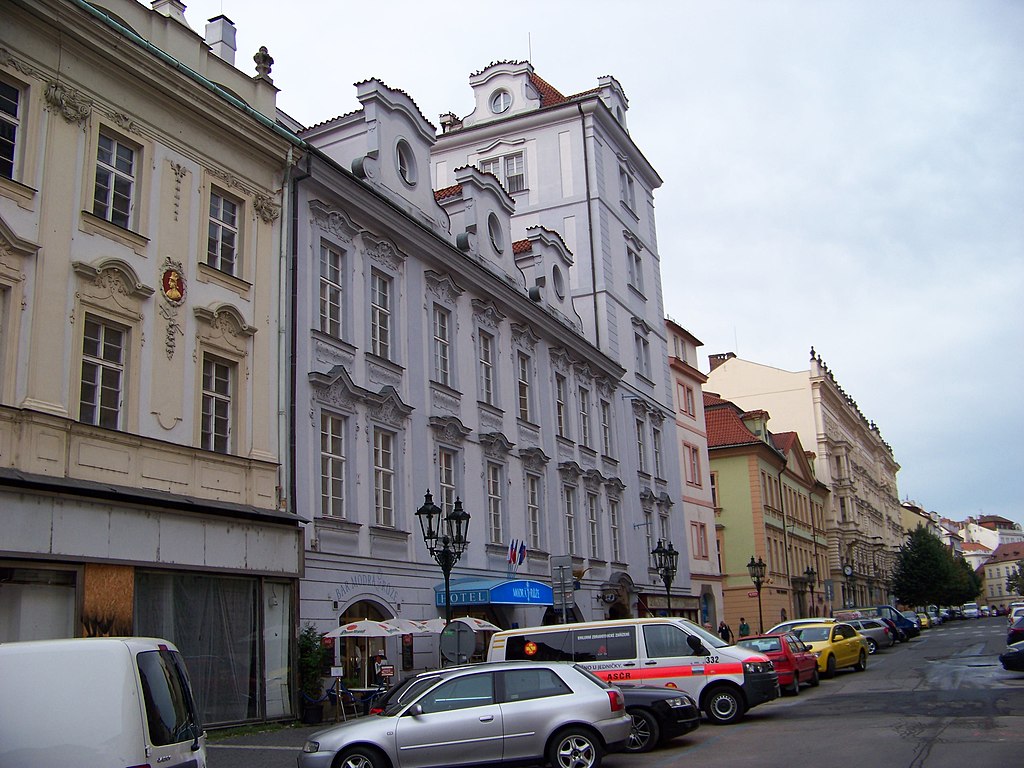
Na Můstku 4, Samuel’s House
Stop at house #4 on Na Můstku street. This house, called the Samuel’s House, is an odd shape, with one edge jutting out from the rest. This is because two older homes were joined together to form one building. You’ll find the tremendous baroque house sign at the corner of the join, a sculpture of Samuel anointing David as he becomes king. The 16th-century owner of the home had this installed as his first name was Samuel.
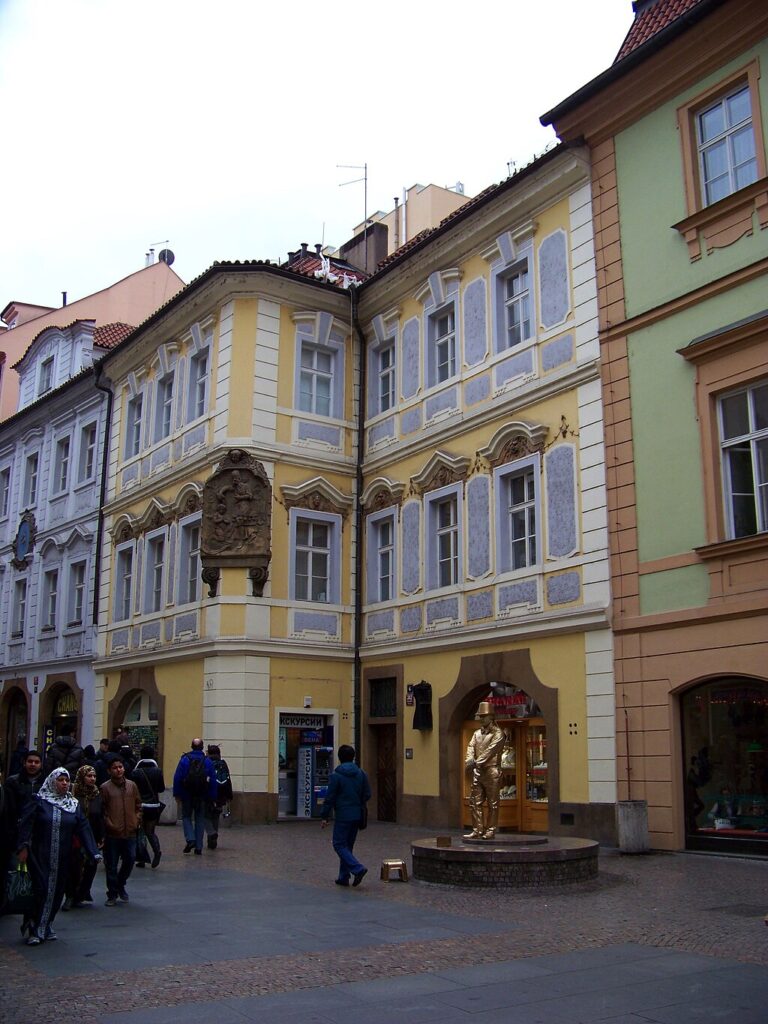
Na Můstku 6/381, At the Two White Pigeons
This beautifully bright white terraced gothic house has the most wonderful oval cartouche displaying the house sign above the front entrance. Two small white pigeons are set against a sky-blue background that give the house its name. Surrounding the insignia is a richly decorated stucco frame set against the baroque facade, dating back to the 1840s. Pigeons are often associated with the Holy Spirit. They are sometimes regarded as a symbol of pure, innocent, and true things. But when we see two pigeons together like this, it symbolizes true love and commitment as pigeons and doves mate for life.
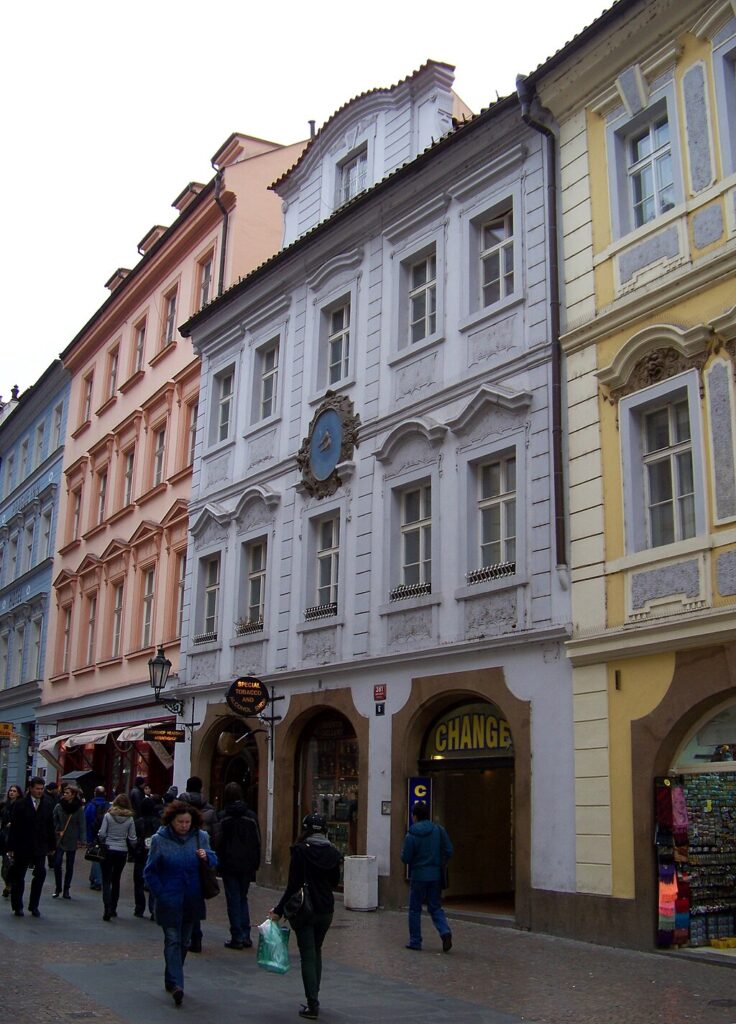
Října 378, The Bee Hive
In medieval times, the house we see at #378 on Října was a series of small homes. Later, in the 16th century, the townhomes were joined to form this large palace. In 1789, a beeswax maker named Nicholas Fischer took ownership of the property and called it the Bee Hive. He remodelled the house in high baroque fashion and added his house symbol to the top, a stunning golden beehive made in stucco. The tiny bees which appear to fly in and out of the hive are incredibly charming. The beehive symbol is strongly connected to the Freemasons as the hive represents the lodge or meeting place for the members. Many people suspect the beeswax business was just a front for the Freemasons.
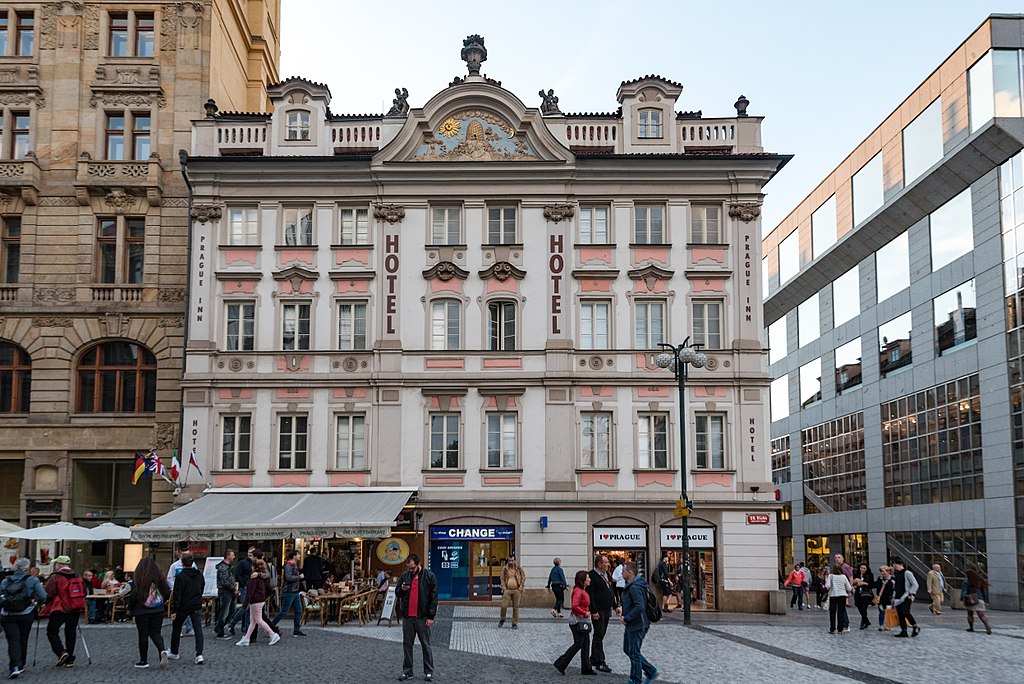
This brings us to the end of the tour in the Old Town. You can continue the tour of the Mala Strana House signs by heading across the Vlatava River to the western side of town. Feel free to end the tour here and continue exploring the old city’s wonder. And continue the second part of the tour another day! Let me know in the comments what your favourite house sign was or what your house sign would be if you were to have one.
Happy Travels, Adventurers!
Resources
Pamatkovykatalog | Kralovskacesta | Wiki Commons (Images)


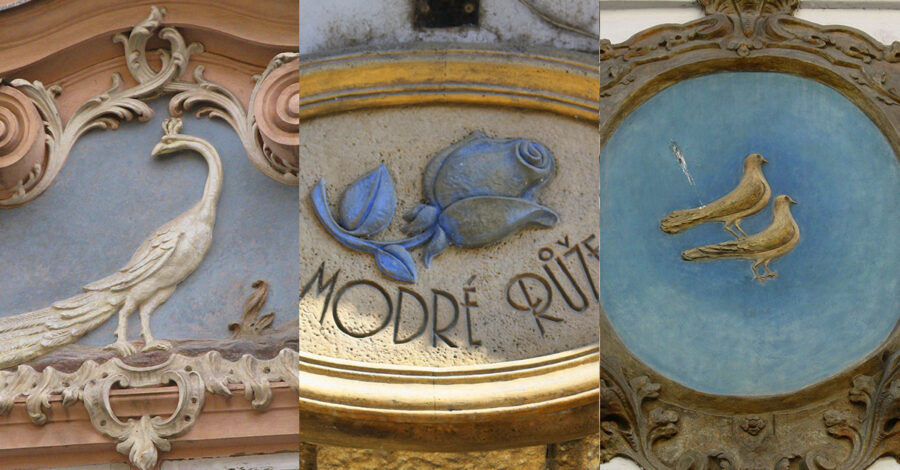
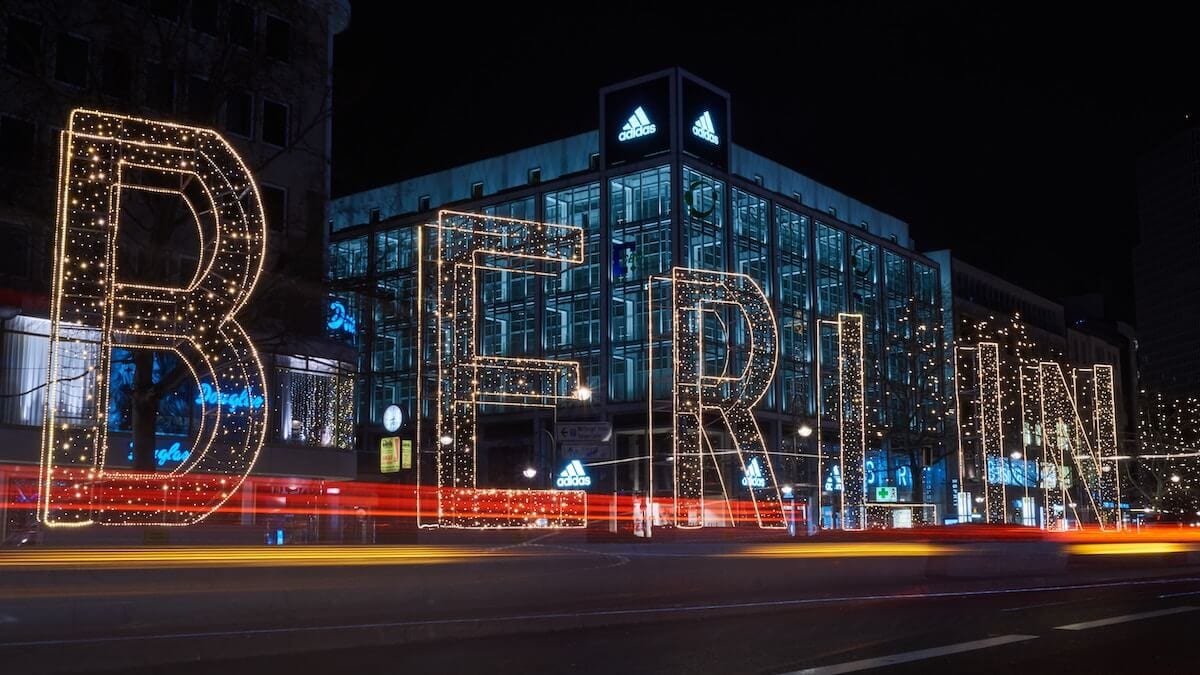
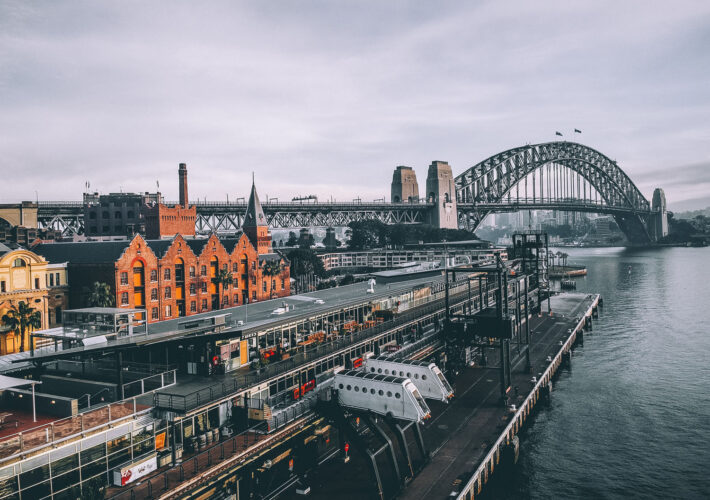
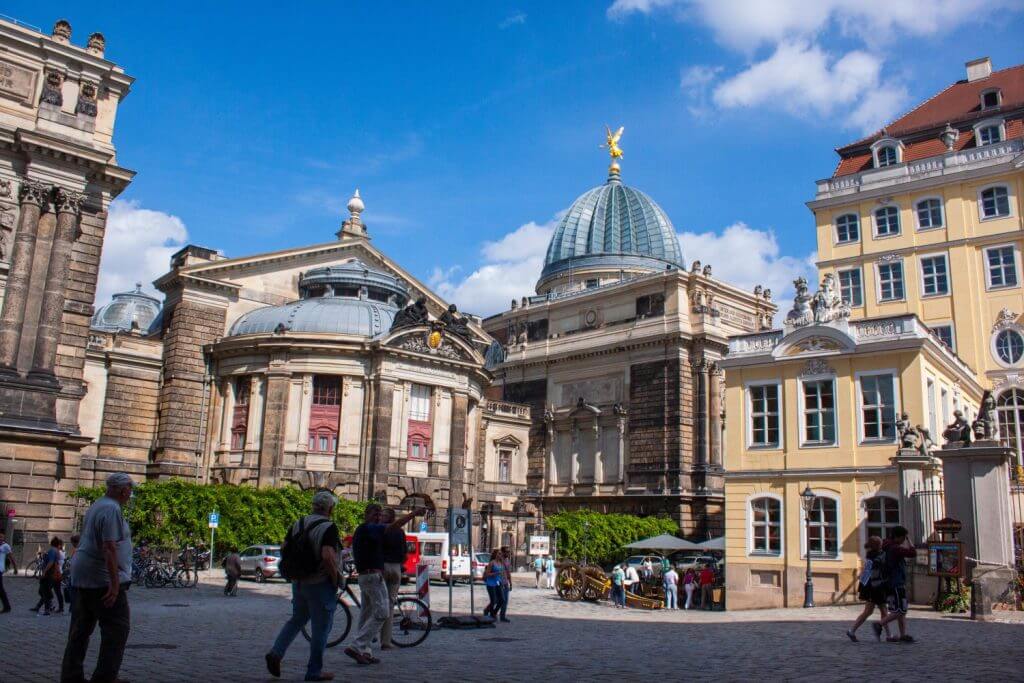
3 COMMENTS
Goran Crnojački
4 years agoBravo, one of the best posts about Prague that I have found. Amazing work!
laura.f.whelan
4 years ago AUTHORThanks so much! I really put a lot of effort into the research as I love these house signs and think they are such a hidden gem of the city!
waterfallmagazine.com
4 years agohttps://waterfallmagazine.com
I have to thank you for the efforts you have put in writing this blog.
I’m hoping to see the same high-grade blog posts from you later on as
well. In truth, your creative writing abilities has motivated me to get my own, personal blog now 😉